Creating a Relaxing Oasis: Tips for Designing a Tranquil Bedroom
Designing a tranquil bedroom is essential for creating a peaceful sanctuary where you can unwind, relax, and recharge after a long day. Your bedroom should be a haven of tranquility, free from clutter and distractions, promoting restful sleep and a sense of well-being. In this article, we’ll explore various tips and strategies to help you transform your bedroom into a serene oasis where you can escape the stresses of everyday life.
Embrace Calming Colors and Soft Textures
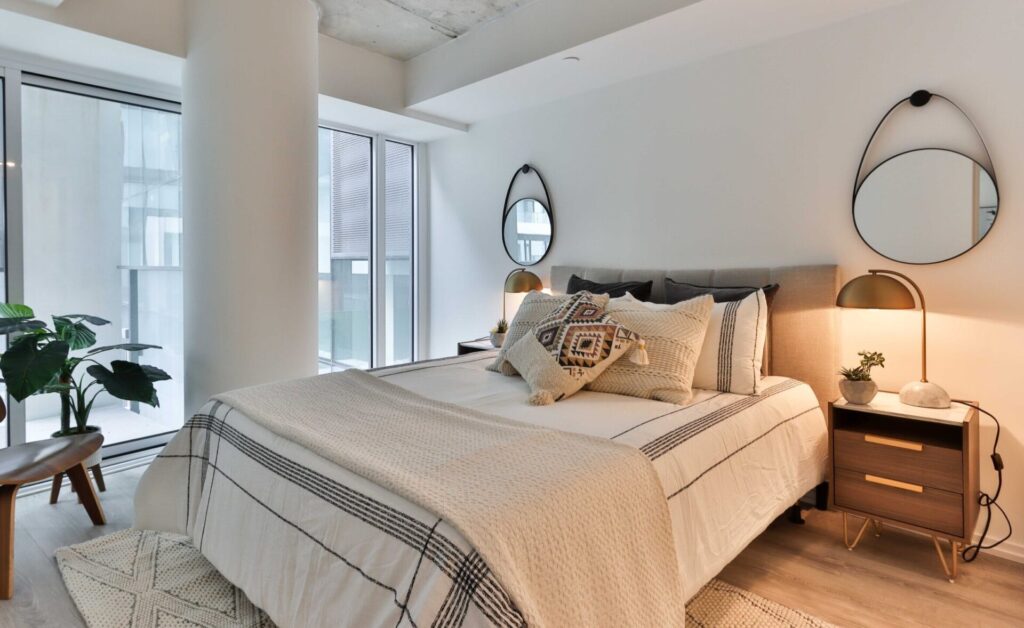
Choosing the right color palette and textures is crucial for setting the tone of your bedroom. Opt for soft, muted hues such as pastel blues, soothing greens, or gentle grays to create a calming atmosphere. These colors have been scientifically proven to promote relaxation and reduce stress levels, making them perfect for a tranquil bedroom environment.
In addition to color, pay attention to the textures in your bedroom. Incorporate plush pillows, cozy blankets, and luxurious fabrics like silk or cashmere to add warmth and comfort to your space. Soft textures not only feel good against the skin but also evoke a sense of coziness and relaxation, helping you unwind and drift off into a peaceful slumber.
To enhance the calming ambiance further, consider adding natural elements such as wooden furniture, rattan accents, or fresh flowers. These organic elements bring a sense of serenity and connection to nature, promoting a feeling of harmony and balance in your bedroom.
Declutter and Simplify Your Space
A cluttered and disorganized bedroom can create feelings of stress and anxiety, making it challenging to relax and unwind. To cultivate a tranquil atmosphere, declutter your space and simplify your surroundings. Start by removing any unnecessary items or belongings that don’t serve a purpose in your bedroom.
Invest in storage solutions such as under-bed storage bins, floating shelves, or decorative baskets to keep clutter at bay and maintain a clean, streamlined look. Be mindful of the items you choose to display, opting for minimalist décor and meaningful accents that bring you joy and contribute to the overall sense of calmness.
Create designated zones for sleeping, dressing, and relaxation to establish a sense of order and purpose in your bedroom. Keep surfaces clear and uncluttered, allowing for easy movement and flow throughout the space. By simplifying your surroundings, you’ll create a peaceful environment that promotes relaxation and well-being.
Prioritize Comfort and Functionality
When designing a tranquil bedroom, prioritize comfort and functionality to ensure a restful night’s sleep and a rejuvenating space for relaxation. Invest in a high-quality mattress and supportive pillows that provide proper alignment and comfort for your body.
Choose bedding made from breathable, natural fabrics like cotton or linen to promote airflow and regulate temperature, creating a comfortable sleep environment year-round. Layer your bed with soft blankets and throws for added warmth and coziness during colder months.
Consider the layout of your bedroom and arrange furniture in a way that maximizes space and promotes relaxation. Position your bed away from noisy distractions such as windows or doors and create a dedicated seating area where you can unwind with a book or enjoy a cup of tea before bedtime.
Incorporate Aromatherapy and Scented Candles
Enhance the ambiance of your tranquil bedroom by incorporating aromatherapy and scented candles. Choose essential oils known for their relaxing properties, such as lavender, chamomile, or eucalyptus, and diffuse them in your bedroom to promote a sense of calmness and relaxation. Additionally, light-scented candles with soothing fragrances create a warm and inviting atmosphere that soothes the senses and helps you unwind after a long day.
Aromatherapy has been used for centuries as a natural remedy for stress and anxiety, harnessing the power of plant extracts to promote physical and emotional well-being. Lavender, in particular, is renowned for its calming effects on the nervous system, helping to reduce insomnia and promote restful sleep. Chamomile is another popular choice for its gentle sedative properties, while eucalyptus can help clear the sinuses and ease respiratory issues.
In addition to their therapeutic benefits, scented candles add a touch of warmth and elegance to your bedroom decor. Opt for natural soy or beeswax candles scented with essential oils for a healthier alternative to synthetic fragrances. Light candles in the evening to create a cozy atmosphere that signals to your brain that it’s time to unwind and relax. With that pleasant atmosphere, you can easily devote yourself to an interesting book and sweet homemade wine served in a special wine glass.
Create a Personal Retreat with Mindful Meditation
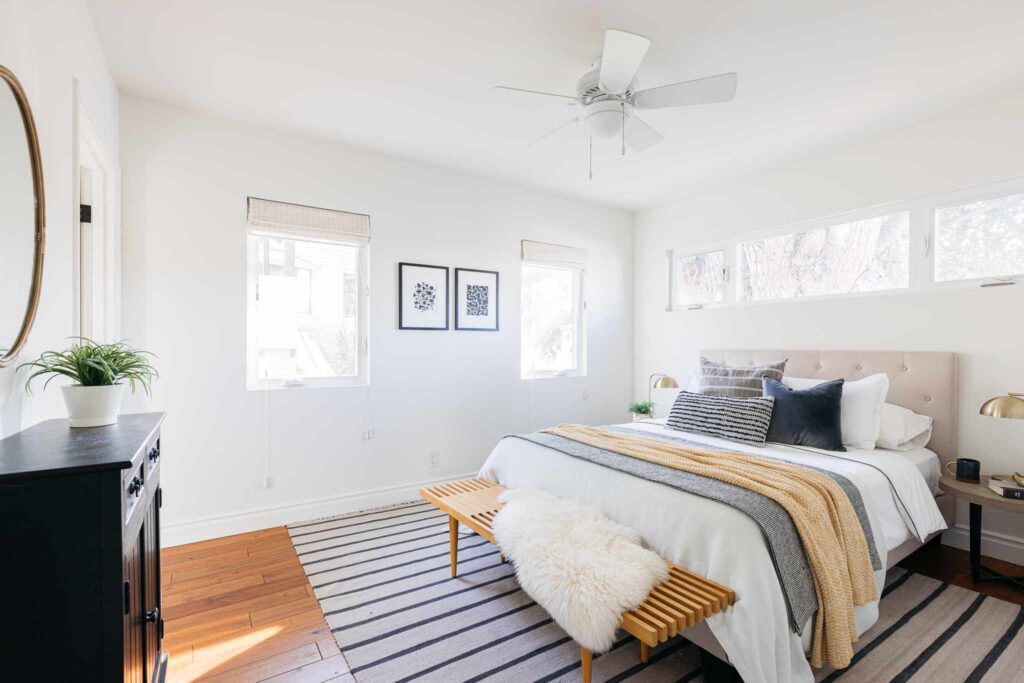
Transform your bedroom into a personal retreat by incorporating mindful meditation practices into your daily routine. Set aside a designated meditation space where you can sit quietly and practice deep breathing exercises, visualization techniques, or guided meditation sessions. By cultivating a regular meditation practice in your bedroom, you’ll promote a sense of inner peace and tranquility that carries over into every aspect of your life.
Meditation has numerous proven benefits for both physical and mental health, including stress reduction, improved focus and concentration, and enhanced emotional well-being. By taking a few moments each day to quiet your mind and center yourself, you can better manage the challenges and pressures of daily life and cultivate a greater sense of resilience and equanimity. In order to achieve this, pets are also not a bad choice because they will cheer you up and motivate you, and in order to know that you have chosen the right animal for you, you can visit one of the excellent pet expo.
To create a meditation space in your bedroom, choose a quiet corner or alcove where you won’t be disturbed. Decorate the space with items that inspire and uplift you, such as candles, crystals, or inspirational quotes. Keep the area clutter-free and uncluttered to create a sense of calmness and serenity. However, so that you can dive deeper into that peaceful moment of meditation, make sure that you solve some problems that are in your hands, and if you are waiting for car repair or diagnostics, you can quickly solve your problem at a reliable transmission service in Buffalo.
Harness the Power of Natural Light and Blackout Curtains
Maximize the benefits of natural light in your bedroom while maintaining privacy and controlling brightness levels with blackout curtains. During the day, open curtains and blinds to let in natural sunlight, which helps regulate your circadian rhythm and boosts mood and energy levels. In the evening, close blackout curtains to block out external light sources and create a dark, restful environment conducive to sleep. In this way, you will be able to manage your mood during the day by controlling the conditions of the room in which you spend the most time, and if you decide to invest wisely in one of the properties for living like the beautiful houses in Boca Falls, you will have plenty of space and a home that is airy and feel free to edit it according to your inspiration and creativity.
Natural light plays a crucial role in regulating our body’s internal clock, or circadian rhythm, which governs our sleep-wake cycle. Exposure to natural sunlight during the day helps synchronize this rhythm, promoting alertness and vitality during waking hours and facilitating restful sleep at night. By allowing ample natural light into your bedroom during the day, you can enhance your overall well-being and promote a healthy sleep pattern. In order to learn more about the importance of your interior, which can greatly affect your mood and motivation, you can visit some of the famous European seminars that talk about motivation and meditation, in order to travel comfortably and economically on this trip and visit all the places you want along the way, rent a car in Beograd.
In addition to maximizing natural light, blackout curtains provide an effective solution for blocking out unwanted light and creating a dark, restful sleep environment. These curtains are made from thick, opaque fabrics that prevent light from penetrating through the window, helping to create a cave-like atmosphere that signals to your brain that it’s time to sleep. Blackout curtains are particularly beneficial for individuals who work night shifts or have irregular sleep schedules, as they can help minimize disruptions and promote better sleep quality. To help you feel more secure while working this late, you can install one of the great and reliable access control systems from Philadelphia that will keep you completely safe in your home.
Integrate Sound Therapy with White Noise Machines
Improve the quality of your sleep and create a peaceful atmosphere in your bedroom with the use of white noise machines or sound therapy devices. These devices emit soothing sounds such as ocean waves, rainforest sounds, or gentle lullabies, masking disruptive noises and promoting relaxation. Experiment with different soundscapes to find one that resonates with you and enhances your sleep quality. There are several different radio stations that play extremely soothing sounds that will help you fall asleep quickly and easily, and their development has kept pace with the development of telecommunications and the demand for millimeter wave products found in radios and telephones.
Sound therapy, also known as white noise therapy, has been used for decades as a natural remedy for insomnia and sleep disturbances. By masking background noises such as traffic, barking dogs, or noisy neighbors, white noise machines create a consistent, soothing sound environment that promotes relaxation and helps you fall asleep faster and stay asleep longer. Additionally, white noise can help drown out internal thoughts and mental chatter, allowing you to quiet your mind and drift off into a restful slumber. The promotion of such therapies has reached a wide audience of people as one of the reliable and pleasant ways to easily fall asleep, and if good promotion is important to your business, a lot of people will learn more about your business and brand, look for an excellent Colorado Springs SEO company that will make a successful promotion plan for you.
When selecting a white noise machine for your bedroom, choose one that offers a variety of sound options and customizable features, such as volume control, timer settings, and adjustable sound frequencies. Place the machine on a bedside table or dresser within easy reach, ensuring that it’s positioned at a comfortable distance from your bed to minimize disturbance. An Internet provider that manages IT services in San Antonio provides its users with excellent Internet with which they can find pleasant playlists with sounds that suit them best so that they can fall asleep peacefully and easily.
Cultivate a Connection to Nature with Indoor Plants
Bring the outdoors inside and cultivate a connection to nature in your tranquil bedroom by incorporating indoor plants. Choose low-maintenance plants like snake plants, peace lilies, or spider plants that thrive in indoor environments and purify the air, creating a healthier and more serene atmosphere. Surround yourself with greenery to evoke a sense of calmness and tranquility that enhances your overall well-being. One of the activities that can further connect you with nature and give you a pleasant feeling is horse riding, in a relaxing companionship with an animal and a personalized saddle blanket, you will use up excess energy while enjoying real nature and fresh air.
Indoor plants not only add beauty and visual interest to your bedroom decor but also offer numerous health benefits for both mind and body. Studies have shown that spending time in nature or simply being around plants can reduce stress, lower blood pressure, and improve mood and concentration. By bringing a touch of nature into your bedroom, you can create a peaceful oasis where you can escape the stresses of everyday life and find solace in the beauty of the natural world. However, if you still have some health problems that worry you, you can consult with experienced and excellent general surgeons in Texas who will make sure that you get better quickly.
When selecting plants for your bedroom, choose ones that are well-suited to indoor conditions and require minimal maintenance. Consider factors such as light levels, humidity levels, and temperature fluctuations to ensure that your plants thrive in their new environment. Place plants in strategic locations throughout your bedroom, such as on bedside tables, dressers, or shelves, to create a harmonious balance of greenery and negative space. In order to be fully informed about the life system of your plant, you can consult with an expert, and if you are worried about this kind of science because of the tests and materials you have at school, an excellent science tutor in Boulder can help you.
Enhance Relaxation with a Cozy Reading Nook
Create a cozy reading nook in your bedroom where you can escape into a good book and unwind before bedtime. Designate a comfortable corner or alcove with a plush armchair, soft lighting, and a stack of your favorite books or magazines. Make this space your own personal sanctuary where you can relax, rejuvenate, and indulge in the simple pleasure of reading. This is a great corner for young members of the Readathon school fundraiser organization who are very committed to developing their good reading hobby.
Reading has long been hailed as a relaxing and enjoyable pastime, offering numerous benefits for mental stimulation and stress reduction. By immersing yourself in a captivating story or engaging with thought-provoking content, you can transport yourself to another world and temporarily escape the pressures and distractions of everyday life. Whether you prefer fiction or non-fiction, poetry or prose, there’s a book out there to suit every taste and interest. In order to expand your bookish knowledge and interests, you can rent a car in Beograd and be sure to visit one of the large European book fairs where you will find many like-minded people and share with them your impressions of one of your favorite novels.
When creating a reading nook in your bedroom, pay attention to comfort and ambiance to ensure a relaxing and inviting atmosphere. Choose a cozy armchair or chaise lounge with plush cushions and soft upholstery where you can sink in and get comfortable for hours on end. Position the chair near a window or under a reading lamp to provide ample light for reading without straining your eyes. This approach is very important so that you can completely relax, scientists have been researching the best time and conditions for reading for some time while also working on the development and solution of some bigger problems such as creating the best treatment for autism so that children diagnosed with this condition have the best therapy provided.
Elevate Your Sleep Experience with Luxury Bedding
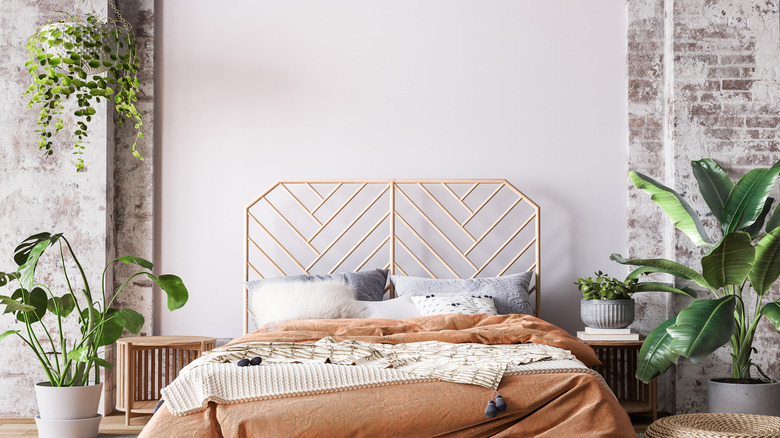
Invest in luxury bedding to elevate your sleep experience and create a sumptuous haven of comfort and relaxation in your bedroom. Choose high-quality sheets, duvet covers, and pillowcases made from premium fabrics like Egyptian cotton or bamboo, known for their softness, durability, and breathability. Treat yourself to the ultimate in comfort and luxury for a restful night’s sleep and a rejuvenated start to each day. It’s also important that the fabric fits you perfectly like a great combat clothing so you can enjoy the best quality and go about your business without any problems.
Luxury bedding is more than just a decadent indulgence—it’s an investment in your health and well-being. Studies have shown that sleeping on high-quality bedding can improve sleep quality, enhance comfort, and reduce the risk of sleep-related issues such as insomnia and restless leg syndrome. By investing in luxury bedding, you can create a sleep environment that promotes relaxation and rejuvenation, allowing you to wake up feeling refreshed and revitalized each morning. You should not skimp on such investments, as with choosing the best men’s soccer cleats and sports equipment, because you are investing in your health.
When selecting luxury bedding for your bedroom, prioritize comfort, quality, and craftsmanship to ensure a superior sleep experience. Look for bedding made from long-staple cotton or bamboo fibers, which are softer, smoother, and more durable than standard cotton varieties. Choose sheets with a high thread count for a luxurious feel and superior breathability, ensuring a comfortable night’s sleep in any season. In the end, in order to sleep safely and peacefully, if you run a larger business, insure yourself with the best truck insurance.
Conclusion
Designing a tranquil bedroom is a holistic process that involves careful consideration of various elements to create a peaceful sanctuary where you can relax, unwind, and recharge. By incorporating calming colors and textures, decluttering and simplifying your space, prioritizing comfort and functionality, and embracing additional strategies such as aromatherapy, meditation, and sound therapy, you can transform your bedroom into a serene oasis that promotes restful sleep and overall well-being. Follow these tips to create the perfect retreat where you can escape the stresses of everyday life and find peace and tranquility whenever you need it most. Improve your knowledge with some of the excellent online courses and dedicate yourself to developing your personal space where you will enjoy meditation and peace.
Modern Comforts, Rustic Charm: Contemporary Cottage Designs in Rural America
The allure of rustic charm blended with modern comforts has sparked a renaissance in contemporary cottage designs across rural America. These dwellings, nestled amidst the serene countryside, offer a unique fusion of traditional aesthetics and contemporary conveniences. From quaint cabins to sprawling farmhouses, these modern cottages redefine rural living, attracting homeowners seeking solace and sophistication in equal measure.
Harmonizing Tradition and Innovation
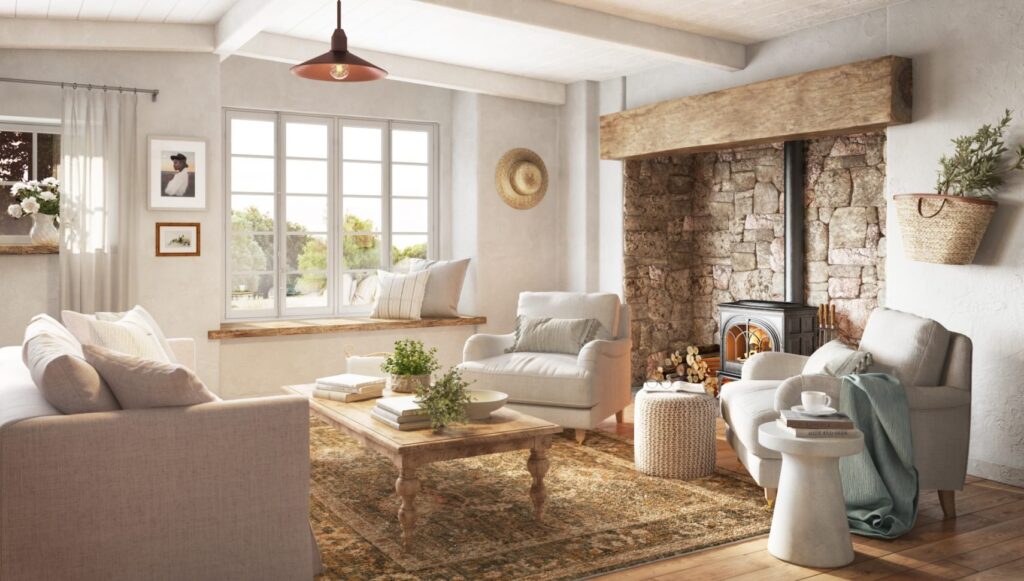
In the heart of rural landscapes, architects and designers are seamlessly integrating traditional architectural elements with innovative design concepts to create modern cottages that pay homage to their rustic surroundings while embracing the luxuries of the 21st century. Exposed wooden beams, reclaimed materials, and stone accents evoke a sense of nostalgia, while expansive windows, open floor plans, and smart home technologies cater to the demands of modern living.
Blurring Indoor-Outdoor Boundaries
One of the defining features of contemporary cottage designs is the emphasis on blurring the boundaries between indoor and outdoor spaces, allowing homeowners to fully immerse themselves in the natural beauty that surrounds them. Expansive porches, covered patios, and outdoor living areas seamlessly extend the living space outdoors, creating a harmonious connection with nature. Floor-to-ceiling windows offer panoramic views of rolling hills, tranquil lakes, and lush forests, bringing the outdoors in and flooding interiors with natural light.
Efficiency and Sustainability
While traditional cottages may exude charm, modern designs prioritize efficiency and sustainability, incorporating green building practices and energy-efficient technologies to reduce environmental impact and lower utility costs. From passive solar design and high-performance insulation to rainwater harvesting systems and solar panels, these eco-friendly features not only benefit the planet but also enhance the comfort and affordability of rural living.
Versatile Living Spaces
Contemporary cottages are designed to adapt to the evolving needs and lifestyles of their inhabitants, with versatile living spaces that can easily accommodate a variety of activities and functions. Open-concept layouts promote fluidity and flexibility, allowing for seamless transitions between cooking, dining, and entertaining areas. Multi-functional furniture, built-in storage solutions, and adaptable room configurations maximize space and functionality, ensuring that every square foot is utilized to its full potential.
These cottages often feature exterior surfaces that benefit from soft washing in St. Augustine, maintaining their pristine appearance amidst changing weather conditions.
Embracing Minimalism
In an era of excess, many homeowners are embracing the principles of minimalism and opting for simple yet stylish interiors that prioritize quality over quantity. Clean lines, neutral color palettes, and natural materials create a sense of calm and serenity, allowing the beauty of the surrounding landscape to take center stage. Thoughtfully curated decor and furnishings add personality and warmth without overwhelming the space, resulting in a timeless aesthetic that feels both inviting and refined.
Alongside carefully selected furnishings, including plush sofas and elegant coffee tables, a neatly folded stack of men’s t-shirts offers a touch of casual comfort to the space, blending effortlessly with the minimalist theme.
Community Integration and Shared Spaces
In addition to providing a haven for individual homeowners, contemporary cottage designs also prioritize community integration and shared spaces, fostering a sense of belonging and camaraderie among residents. Planned developments featuring clustered cottages encourage social interaction and collective activities, such as community gardens, walking trails, and shared recreational facilities. These communal spaces serve as gathering points where neighbors can come together to celebrate, collaborate, and build lasting friendships, enriching the fabric of rural communities and promoting a vibrant sense of community spirit. Families residing in these modern cottages often find ample support for their educational endeavors, with resources including access to a homeschooling tutor in Bettendorf, enhancing the holistic lifestyle these communities offer.
Adaptive Design for Aging in Place
As demographics shift and more individuals seek to age gracefully in their homes, contemporary cottage designs are embracing adaptive design principles to accommodate the changing needs of residents over time. Features such as zero-step entrances, wide doorways, and accessible bathrooms ensure that cottages remain functional and comfortable for homeowners of all ages and abilities. In addition, flexible floor plans and optional amenities, such as elevators and first-floor master suites, provide homeowners with the freedom to customize their living spaces to suit their evolving lifestyle requirements, allowing them to remain in their beloved cottages for years to come. Incorporating innovative blinds and screens in Colorado adds a touch of modern functionality while enhancing privacy and controlling natural light levels, further enhancing the comfort and versatility of these homes.
Artisanal Craftsmanship and Local Materials
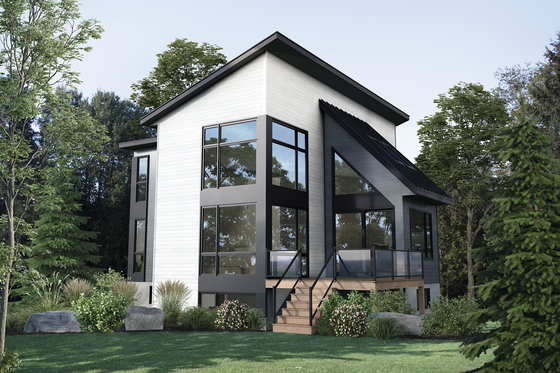
While modern cottage designs often incorporate state-of-the-art technologies and innovative construction techniques, they also celebrate the timeless artistry of traditional craftsmanship and the rich legacy of local materials. Skilled artisans and craftsmen imbue each cottage with character and charm, handcrafting custom features such as intricate woodwork, hand-hewn beams, and bespoke cabinetry that showcase the beauty of natural materials. By sourcing materials locally and supporting regional artisans, contemporary cottage designs honor the heritage of rural craftsmanship while promoting sustainable practices and economic vitality within local communities. Some cottage owners have started incorporating branded merchandise featuring iconic elements of their cottages, further enhancing the sense of identity and connection with visitors.
Resilient Design for Extreme Weather Conditions
In an era marked by increasingly frequent and severe weather events, resilience has become a paramount consideration in contemporary cottage design. Architects and builders are incorporating resilient design strategies to enhance the structural integrity and durability of cottages, ensuring their ability to withstand extreme weather conditions such as hurricanes, floods, and wildfires. From reinforced foundations and impact-resistant windows to wind-resistant roofing materials and fire-resistant siding, these resilient features provide homeowners with peace of mind and protection against the unpredictable forces of nature, safeguarding both lives and property. Proactive homeowners also consider essential services such as emergency plumbers in Charlotte to further fortify their preparedness for unforeseen challenges.
Digital Connectivity and Remote Workspaces
The rise of remote work and digital connectivity has revolutionized the way people live and work, prompting contemporary cottage designs to prioritize flexible and functional remote workspaces. Home offices with high-speed internet access, integrated technology systems, and ergonomic furnishings enable homeowners to stay connected and productive while enjoying the tranquility of rural living. In addition, communal co-working spaces and shared amenities such as conference rooms and business centers cater to the needs of remote workers and entrepreneurs, fostering a dynamic work-life balance within cottage communities.
Some cottage communities even offer exclusive amenities such as access to shared transportation services, including the option to rent a jet for business travel, enhancing the convenience and allure of rural living for professionals.
Holistic Wellness and Mindful Living
Recognizing the importance of holistic wellness and mindful living, contemporary cottage designs incorporate elements that promote physical, mental, and emotional well-being. From yoga studios and meditation gardens to spa-like bathrooms and outdoor wellness retreats, these wellness-focused amenities provide residents with opportunities to recharge, rejuvenate, and nurture their overall health and wellness. Sustainable practices such as organic gardening, renewable energy systems, and natural building materials further contribute to a healthy and environmentally conscious lifestyle, fostering harmony between residents and their natural surroundings. Innovative features like Japanese scissors for bonsai trimming are incorporated, offering residents unique tools to tend to their green spaces with precision and care.
Cultural Preservation and Heritage Tourism
In addition to serving as private residences, contemporary cottages also play a role in preserving cultural heritage and promoting heritage tourism in rural America. Historic cottages and heritage properties are lovingly restored and repurposed as vacation rentals, bed-and-breakfasts, and cultural heritage centers, offering visitors a glimpse into the rich history and traditions of rural communities. By preserving these architectural gems and sharing their stories with visitors, cottage owners contribute to the cultural vitality and economic sustainability of their communities, ensuring that future generations can continue to appreciate and celebrate America’s rural heritage. Visitors can enjoy exploring local attractions such as hiking trails, and historical landmarks, and even checking the bass fishing forecast for nearby lakes and rivers, enriching their experience of rural life.
Innovative Financing and Ownership Models
To make homeownership more accessible and affordable, contemporary cottage designs are exploring innovative financing and ownership models that cater to a diverse range of needs and preferences. Shared equity arrangements, cooperative housing developments, and lease-to-own programs offer alternative pathways to homeownership for individuals and families who may face barriers to traditional mortgage financing. In addition, community land trusts and affordable housing initiatives prioritize affordability and long-term stewardship, ensuring that rural cottages remain accessible to individuals of all income levels and backgrounds, and fostering inclusive and equitable communities for generations to come. For those seeking temporary accommodations or exploring the area before committing to homeownership, options such as rent a car at Sarajevo Airport can provide flexibility and convenience.
Culinary Experiences and Farm-to-Table Dining
Building upon the agrarian roots of rural America, contemporary cottage designs embrace the culinary arts and celebrate the joys of farm-to-table dining. Cottage kitchens are thoughtfully designed with gourmet appliances, ample storage, and generous workspaces to accommodate home chefs and culinary enthusiasts. Outdoor kitchens, herb gardens, and fruit orchards provide residents with opportunities to cultivate their own ingredients and experiment with seasonal flavors, while communal dining spaces and farm-to-table restaurants showcase the bounty of local farms and artisanal producers, creating a vibrant culinary culture that reflects the unique tastes and traditions of each rural community. These cottages often feature charming architectural elements, such as iron front doors, adding rustic elegance to their inviting ambiance.
Educational Initiatives and Lifelong Learning
In addition to serving as residential retreats, contemporary cottage communities are embracing educational initiatives and lifelong learning opportunities to enrich the lives of residents and foster a culture of continuous growth and exploration. On-site learning centers, workshops, and seminars offer residents access to a diverse array of educational programs, ranging from sustainable living practices and permaculture gardening to arts and crafts workshops and historical lectures. By fostering a culture of curiosity and intellectual engagement, cottage communities empower residents to expand their horizons, develop new skills, and forge meaningful connections with their peers, creating a vibrant atmosphere of lifelong learning and personal enrichment. High pressure misting systems in communal spaces further enhance the residents’ outdoor experiences, adding an element of refreshing comfort and relaxation.
Inter-generational Living and Family-Friendly Amenities
Recognizing the value of inter-generational connections and family ties, contemporary cottage communities are incorporating family-friendly amenities and activities that cater to residents of all ages. Playground areas, community gardens, and recreational facilities provide opportunities for children to play, explore, and connect with nature, while inter-generational programming and events encourage meaningful interactions between residents of different generations. Additionally, cottage communities may offer multi-generational housing options, such as duplexes or accessory dwelling units, that allow extended families to live in close proximity while maintaining privacy and independence, fostering a sense of belonging and support across generations.
Communal spaces within these communities often host events like craft nights or knitting circles, providing spaces where residents can gather to socialize and share skills, such as sewing robes for women.
Cultural Exchange and International Collaboration
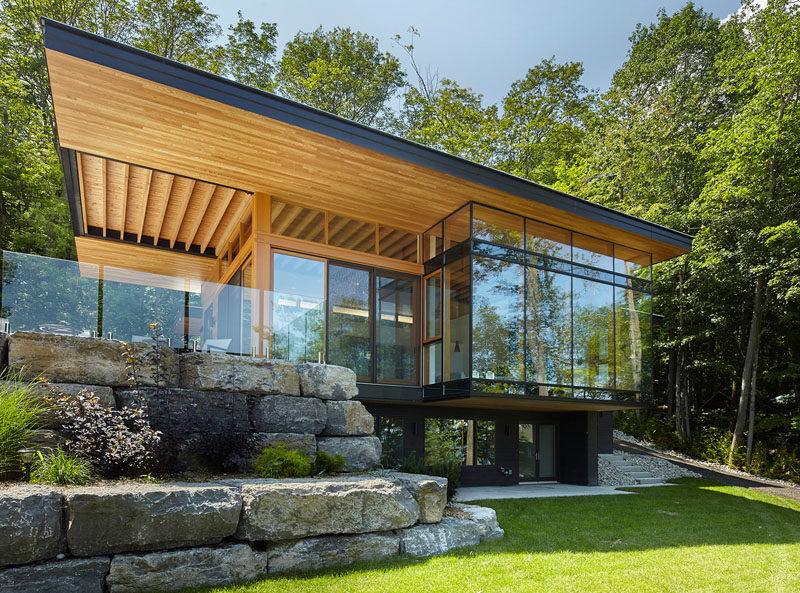
In an increasingly interconnected world, contemporary cottage communities serve as hubs for cultural exchange and international collaboration, welcoming residents from diverse backgrounds and fostering cross-cultural understanding and appreciation. Cultural exchange programs, language classes, and international festivals provide opportunities for residents to learn about different cultures, traditions, and perspectives, while collaborative projects and partnerships with international organizations promote sustainable development and global citizenship. By embracing diversity and inclusivity, cottage communities enrich the fabric of rural life and contribute to the global dialogue on community resilience and sustainable living, bridging divides and fostering a sense of unity and solidarity across borders. Hospitality consultancy services are often engaged to ensure that these communities provide exceptional guest experiences and maintain high standards of hospitality for visitors and residents alike.
Artistic Expression and Creative Exploration
Incorporating elements of artistic expression and creative exploration, contemporary cottage communities nurture a thriving arts and culture scene that celebrates the talents and passions of residents. Art studios, galleries, and performance spaces serve as hubs for creative expression and cultural exchange, hosting exhibitions, concerts, and theatrical productions that showcase the diverse talents of local artists and performers. Additionally, artist-in-residence programs and creative workshops offer residents opportunities to explore new mediums, hone their skills, and collaborate with fellow artists, fostering a dynamic and supportive creative community that inspires innovation and imagination.
Amidst this vibrant cultural landscape, Stevens Point lawyers play a crucial role in safeguarding the legal rights and interests of artists, performers, and community members, ensuring a fair and just environment for creative endeavors to flourish.
Conclusion
In conclusion, contemporary cottage communities in rural America are more than just places to live—they are vibrant hubs of creativity, learning, and collaboration that enrich the lives of residents and contribute to the cultural and economic vitality of their surrounding communities. From educational initiatives and inter-generational living to cultural exchange and artistic expression, these modern cottages embody the spirit of innovation and resilience that defines rural America in the 21st century. As we continue to navigate the challenges and opportunities of our rapidly changing world, cottage communities stand as beacons of hope and possibility, demonstrating the power of community-driven solutions and collective action to create a more sustainable, inclusive, and resilient future for all.
They provide residents with access to essential services, including healthcare options such as all on 4 implants, further enhancing the well-being and quality of life for individuals of all ages.
Luxury on a Budget: How to Achieve High-End Home Renovations Without Breaking the Bank
Home renovations can quickly spiral into costly endeavors if not approached strategically. To achieve high-end results without a hefty price tag, meticulous planning and prioritization are paramount. Start by envisioning your ideal outcome and identify key areas where you want to allocate your budget. Whether it’s upgrading the kitchen, revamping the bathroom, or enhancing the curb appeal, setting clear priorities will guide your renovation journey. Additionally, consider the long-term benefits of each renovation project, focusing on enhancements that will add significant value to your home.
Once you’ve established your renovation priorities, it’s time to create a detailed budget. Begin by researching the cost of materials, labor, and any additional expenses associated with each project. Don’t forget to factor in unexpected costs and allocate a contingency fund to cushion against surprises. With a clear budget in place, explore cost-saving measures without compromising on quality. For instance, opt for high-quality but budget-friendly materials, compare quotes from multiple contractors to secure competitive pricing, and consider tackling certain tasks yourself if you have the skills and time.
Efficient project management is key to keeping costs in check and ensuring a smooth renovation process. Break down each project into manageable tasks and create a realistic timeline for completion. By scheduling renovations strategically and coordinating with contractors effectively, you can minimize disruptions to your daily life and prevent unnecessary delays. Regularly monitor progress against your timeline and budget, addressing any deviations promptly to prevent overspending. With careful planning, prioritization, and project management, achieving high-end home renovations on a budget is within reach. In addition, consider integrating physiotherapy in Austin services into your budget to ensure the well-being of everyone involved in the renovation process, addressing any physical strains or injuries that may occur.
Embrace Creativity and Resourcefulness
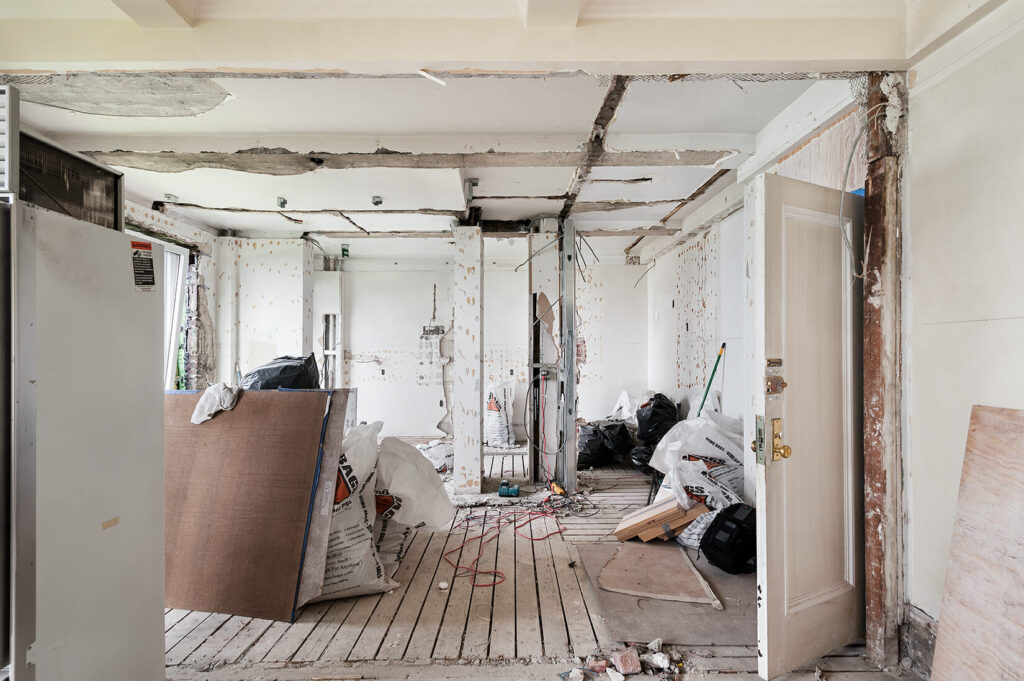
Creativity and resourcefulness are invaluable assets when it comes to achieving luxurious home renovations without breaking the bank. Instead of splurging on expensive designer pieces, explore alternative options that offer comparable aesthetics at a fraction of the cost. Consider upcycling and repurposing existing furniture and fixtures to breathe new life into your space while reducing expenses. Embrace DIY projects to personalize your home and add unique touches that reflect your style.
When selecting materials and finishes for your renovations, think outside the box and consider unconventional options that deliver visual impact without the hefty price tag. For example, explore eco-friendly and sustainable materials that not only contribute to a luxurious aesthetic but also align with your values. Look for opportunities to source materials locally or online, taking advantage of discounts, promotions, and clearance sales to maximize savings without compromising on quality.
Incorporating elements of luxury into your home doesn’t have to break the bank. Focus on creating focal points that draw the eye and evoke a sense of opulence, such as statement lighting fixtures, elegant hardware, or luxurious textiles. By strategically allocating your budget to prioritize key design elements, you can achieve a high-end look without overspending. Don’t underestimate the impact of small details – thoughtful accents and accessories can elevate the overall ambiance of your home without a significant investment. Don’t underestimate the impact of small details – creatine gummies on your coffee table or a tasteful crystal vase can elevate the overall ambience of your home without a significant investment.
Maximize Space and Functionality
Optimizing space and functionality is essential for creating a luxurious home environment that maximizes comfort and convenience. Before diving into renovations, assess your existing space and identify opportunities for improvement. Consider layout adjustments, storage solutions, and multi-functional furniture to make the most of every square inch. Investing in clever space-saving solutions, such as a promotional display for decorative items, will not only enhance the visual appeal of your home but also improve its livability. Remember, even small changes can make a significant difference in your overall enjoyment of your living space.
When redesigning rooms, prioritize functionality without sacrificing style. Choose furniture and fixtures that serve dual purposes or offer built-in storage to minimize clutter and maintain a clean, streamlined look. Embrace minimalist design principles to create an uncluttered, spa-like atmosphere that exudes luxury and sophistication. Incorporate the best tree removal in Tampa services to ensure the surrounding landscape complements the interior aesthetics seamlessly. Additionally, consider integrating smart home technology to enhance convenience and efficiency, from automated lighting systems to programmable thermostats.
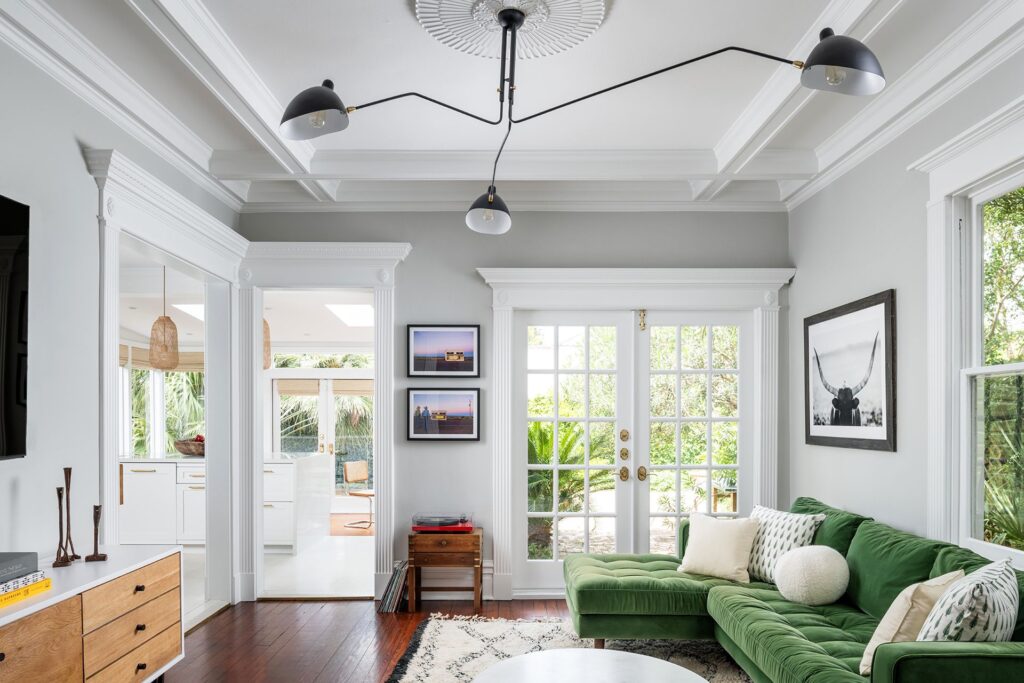
Don’t overlook the potential of outdoor spaces when planning your home renovations. Transforming your backyard or balcony into an oasis of relaxation and entertainment can significantly enhance your quality of life without breaking the bank. Explore budget-friendly landscaping options, such as native plants and DIY garden projects, to create a lush, inviting outdoor retreat. By maximizing both indoor and outdoor spaces, you can achieve high-end home renovations that elevate your lifestyle without exceeding your budget. Considering a dumpster rental in Dayton OH can help streamline the cleanup process, ensuring your renovation project stays organized and efficient from start to finish.
Innovative Technology Integration
Incorporating innovative technology into your home renovations can revolutionize your living space, enhancing comfort, convenience, and efficiency. Embrace the latest advancements in home automation to create a truly futuristic environment that caters to your every need, including social media marketing strategies to connect with your audience and share your home transformation journey. From voice-controlled assistants to smart appliances and integrated security systems, the possibilities are endless. Invest in smart home devices that seamlessly integrate with your lifestyle, allowing you to control lighting, temperature, entertainment, and security with just the touch of a button or a simple voice command.
Energy-Efficient Upgrades
When renovating your home, consider integrating energy-efficient upgrades that not only reduce your environmental footprint but also lower your utility bills in the long run. Explore options such as energy-efficient appliances, LED lighting, and smart thermostats that optimize energy consumption without sacrificing comfort. Improve insulation and seal gaps to prevent energy loss and maximize heating and cooling efficiency. Were you aware that many companies that sell LED lights used services from the renowned Chicago web design company to enhance their website so they can reach more people?
Investing in renewable energy sources, such as solar panels or wind turbines, can further reduce your reliance on traditional energy sources and save you money over time. Additionally, upgrading to energy-efficient restaurant equipment in your kitchen can significantly cut down on operational costs while also benefiting the environment.
Holistic Wellness Spaces
Create holistic wellness spaces within your home that promote relaxation, rejuvenation, and overall well-being. Design a dedicated meditation room or yoga studio where you can escape the stresses of daily life and reconnect with your inner self. If you’re considering enhancing your outdoor space as well, partnering with a reputable fence company in Tennessee can provide privacy and security, ensuring your wellness oasis remains undisturbed by external distractions. Incorporate elements of nature, such as indoor plants, natural light, and calming water features, to foster a sense of tranquility and balance. Integrate soothing aromatherapy and soundscapes to enhance the sensory experience and create a peaceful sanctuary where you can unwind and recharge.
Versatile Multi-Use Areas
Maximize the functionality of your home by creating versatile multi-use areas that adapt to your evolving needs. Designate flexible spaces that can serve multiple purposes, such as a home office that doubles as a guest bedroom or a dining area that converts into a workspace. Consider incorporating a Mobile IV therapy in Jersey service for convenient health support. Invest in furniture with modular designs and space-saving features, such as foldable tables, expandable seating, and wall-mounted storage solutions. By maximizing the versatility of each room, you can optimize your living space and make the most of every square foot.
Sustainable Design Principles
Embrace sustainable design principles to minimize your environmental impact and create a healthier, more eco-friendly home. Choose eco-conscious materials that are sourced responsibly and have minimal environmental impact throughout their lifecycle. Opt for low-VOC paints and finishes to improve indoor air quality and reduce harmful emissions. Incorporate passive design strategies, such as natural ventilation and daylighting, to reduce energy consumption and enhance comfort without relying on mechanical systems. By prioritizing sustainability in your home renovations, you can contribute to a greener future while enjoying the benefits of a more environmentally conscious lifestyle.
If your vehicle somehow breaks down on your way to buy eco-friendly materials just contact the most reliable fast auto repair in Toronto for swift assistance.
Artistic Expression and Personalization
Infuse your home renovations with artistic expression and personalization to create a space that truly reflects your unique personality and style. Explore creative design elements, such as bold color palettes, eclectic artwork, and statement furniture pieces, to make a bold statement and showcase your individuality. Consider incorporating an ergonomic mouse into your workspace setup to ensure both comfort and efficiency while you express your creativity. Incorporate sentimental items and cherished mementos into your decor to imbue your home with warmth and character. Don’t be afraid to experiment with unconventional design choices and mix different styles to create a one-of-a-kind aesthetic that speaks to your personal taste.
Community and Social Spaces
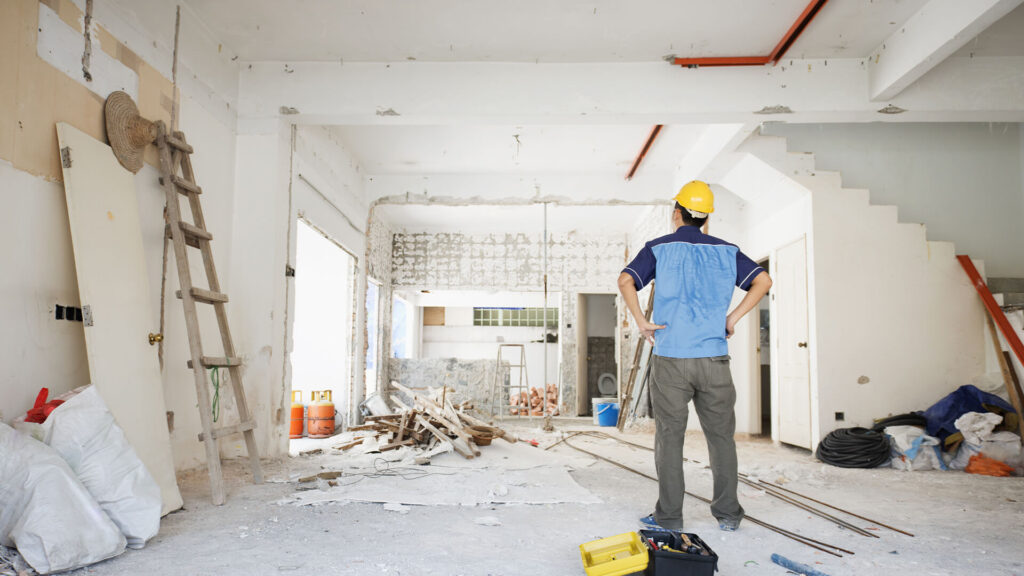
Designate areas within your home that foster community and social interaction, encouraging meaningful connections with family and friends. Create inviting gathering spaces, such as cozy seating areas, game rooms, or outdoor lounges, where you can entertain guests and host memorable gatherings. Invest in comfortable seating and ample amenities to ensure that everyone feels welcome and at ease. Consider incorporating double roller shades for added privacy and light control, along with interactive features, such as board games, multimedia entertainment systems, or outdoor cooking facilities, to create engaging experiences that bring people together.
Future-Proofing and Long-Term Planning
When renovating your home, think beyond the present moment and consider how your needs may evolve over time. Incorporate future-proofing strategies and long-term planning into your renovation projects to ensure that your home remains functional and relevant for years to come. Anticipate changes in lifestyle, family dynamics, and technological advancements, and design your home to accommodate these shifts seamlessly. Invest in durable, high-quality materials and timeless design elements that stand the test of time and retain their value over the years. By taking a proactive approach to future-proofing, you can enjoy the benefits of your home renovations for decades to come.
Reviving Vintage Charm: A Guide to Renovating Historic Homes
Renovating a historic home can be an exhilarating journey, filled with the promise of restoring timeless charm while integrating modern comforts. From preserving original architectural features to navigating local regulations, the process demands meticulous planning and thoughtful execution. For homeowners in need of appliance repair in Charlotte NC, it’s essential to ensure that modern amenities seamlessly blend with the historical aesthetics. In this guide, we delve into the intricate steps involved in reviving vintage charm, offering insights and tips for homeowners embarking on this rewarding endeavor.
Understanding the Historical Context

Before embarking on any renovation project, it’s essential to delve into the historical context of the home. Understanding the architectural style, period details, and significance of the property can guide your renovation decisions. Researching archival documents, consulting local historical societies, and studying old photographs can provide invaluable insights into the home’s evolution over time. By gaining a deeper appreciation for its historical significance, you’ll be better equipped to preserve its unique character during the renovation process.
Once you’ve gathered historical information, conduct a thorough inspection of the property to assess its current condition. Identify any structural issues, water damage, or signs of deterioration that may need attention. Engage the services of a qualified inspector or preservation architect to evaluate the structural integrity and identify potential challenges. If you’re in Atlanta and require transportation to conduct such inspections, consider hiring a reputable limo service in Atlanta. This initial assessment will inform your renovation plans and budget, ensuring that you prioritize essential repairs while preserving the home’s historic fabric.
Preserving Architectural Integrity
Preserving the architectural integrity of a historic home is paramount to maintaining its authenticity and charm. When planning renovations, prioritize the retention of original features such as moldings, trim, doors, and windows. Hiring a virtual emcee can also help guide you through the process, ensuring that the essence of the home remains intact. Salvaging and restoring these elements not only adds character but also enhances the home’s resale value. If replacement is necessary, opt for custom-made replicas that match the original design and materials.
Incorporating sustainable practices into your renovation can also contribute to preserving the home’s historic fabric. Explore eco-friendly materials and energy-efficient technologies that align with the property’s heritage while reducing environmental impact. Consider installing reclaimed wood flooring, energy-efficient windows, and eco-friendly insulation to enhance the home’s comfort and sustainability. By blending modern amenities with traditional craftsmanship, you can create a harmonious living space that honors the past while embracing the future.
Navigating Regulatory Requirements
Renovating a historic home often involves navigating a complex web of regulatory requirements and preservation guidelines. Security services in Los Angeles are also crucial considerations for safeguarding the property during renovation projects. Before commencing any work, familiarize yourself with local historic preservation ordinances and zoning regulations that govern alterations to historic properties. Obtain the necessary permits and approvals from local authorities, historic preservation boards, or architectural review committees to ensure compliance with regulatory requirements.
Engage with preservation professionals, architects, and contractors experienced in working with historic properties to navigate regulatory hurdles effectively. Collaborate with preservation consultants to develop a comprehensive preservation plan that outlines the scope of work, materials, and methods to be used. By demonstrating a commitment to preserving the home’s historic character, you can build trust with regulatory agencies and streamline the approval process.
Celebrating Heritage Through Design
Renovating a historic home offers a unique opportunity to celebrate its heritage through thoughtful design interventions. Embrace the charm of vintage aesthetics while infusing modern conveniences to create a harmonious living environment. Pay homage to the home’s architectural style by selecting period-appropriate fixtures, finishes, and furnishings that complement its historic character.
Consider incorporating design elements inspired by the home’s original era, such as ornate millwork, vintage lighting fixtures, and clawfoot bathtubs. Mix and match old and new furnishings to create eclectic interiors that reflect your personal style while honoring the home’s legacy. Create inviting outdoor spaces that extend the home’s living areas and enhance its curb appeal, preserving the historic streetscape for future generations to enjoy.
If you are planning to sell your home to new to a new place just contact the top-notch company that offers sell my house fast in Allentown PA services.
Renovating Historic Homes: Embracing Modern Technology
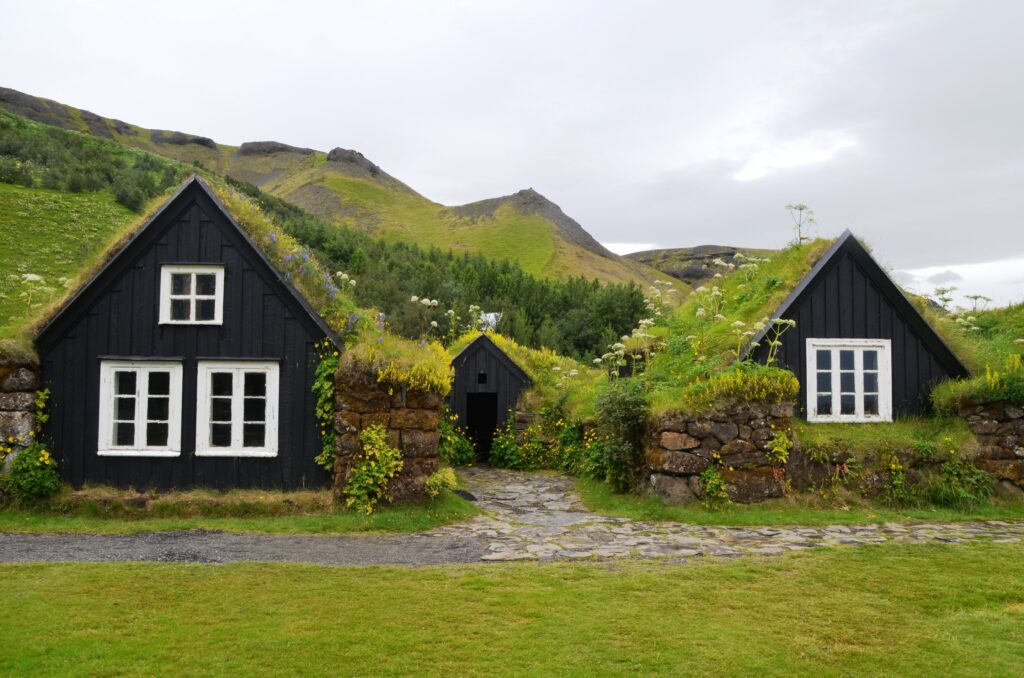
Incorporating modern technology into the renovation of historic homes offers a balance between preserving the past and embracing the future. From smart home systems to energy-efficient appliances, homeowners can enhance comfort and convenience while maintaining the home’s historic integrity. Explore innovative solutions such as home automation, remote monitoring, and renewable energy sources to elevate the functionality and sustainability of your vintage property. By integrating cutting-edge technology with timeless design, you can create a harmonious living space that honors tradition while embracing the possibilities of the digital age.
In addition to enhancing comfort and convenience, modern technology can also contribute to the preservation of historic homes. Climate control systems, for example, can help regulate temperature and humidity levels to protect delicate materials and prevent deterioration. Security systems equipped with motion sensors and surveillance cameras provide peace of mind while safeguarding the property against intruders. Advanced building materials and construction techniques, such as insulated glass windows and seismic retrofitting, can improve energy efficiency and structural resilience without compromising historical authenticity. Moreover, bioidentical hormone replacement therapy has emerged as a means to enhance the well-being of residents in historic homes by addressing age-related hormonal imbalances.
Furthermore, legal help for scaleups in Dubai Middle East can provide essential guidance and support for businesses looking to expand and navigate the complexities of international markets. Incorporating modern technology can enhance accessibility and inclusivity within historic homes. Elevators or chairlifts can be discreetly integrated into the design to provide access to upper floors for individuals with mobility challenges. Smart home features such as voice-activated controls and adjustable lighting can accommodate diverse needs and preferences, ensuring that everyone can enjoy the comfort and convenience of modern living. By embracing modern technology, historic homeowners can create spaces that are not only beautiful and functional but also inclusive and future-proof.
Sourcing Authentic Materials
Authenticity is key when renovating historic homes, and sourcing genuine materials is essential to preserving their original character. Seek out reputable suppliers and salvage yards specializing in reclaimed building materials, architectural salvage, and period-specific fixtures. From reclaimed wood flooring to vintage hardware, selecting authentic materials adds depth and authenticity to your renovation project. Pay attention to details such as patina, texture, and craftsmanship to ensure a seamless integration with the home’s existing features. By honoring the past through the use of authentic materials, you can breathe new life into historic homes while respecting their architectural heritage. For those seeking alternative therapies, consider exploring psilocybin therapy in Portland, which has gained traction for its potential benefits in mental health treatment.
In addition to preserving authenticity, sourcing authentic materials also contributes to sustainability and environmental stewardship. Reclaimed wood, for example, reduces the demand for virgin timber and minimizes waste by repurposing existing resources. Salvaged fixtures and fittings divert materials from landfills and reduce the carbon footprint associated with manufacturing new products. By choosing authentic materials, homeowners can support local artisans and craftsmen while embracing sustainable practices such as vehicle towing in NJ, thereby reducing the environmental impact of their renovation projects. Furthermore, authentic materials age gracefully over time, developing character and patina that tell the story of the home’s history and evolution.
Moreover, sourcing authentic materials fosters a connection to the local community and cultural heritage. By patronizing local suppliers and artisans, homeowners can contribute to the preservation of traditional craftsmanship and support the local economy. Engage with preservation organizations, historical societies, and community groups to learn about regional building traditions and materials. Collaborate with skilled tradespeople who specialize in historic restoration to ensure that materials are sourced and installed in accordance with preservation standards. By prioritizing authenticity in material selection, homeowners can create spaces that resonate with a sense of place and belonging, enriching the cultural fabric of their communities. For those seeking convenience, they can explore an online mall dedicated to showcasing locally made goods, providing a seamless way to support artisans and their craft from the comfort of their homes.
Adapting Spaces for Modern Living
While preserving historical integrity is paramount, adapting spaces for modern living is essential to ensure the functionality and livability of historic homes. Evaluate the needs and lifestyle of your household and consider flexible design solutions that maximize space utilization and comfort. Explore open floor plans, multifunctional spaces, and integrated storage solutions to optimize the layout while preserving the home’s architectural character. By striking a balance between tradition and innovation, you can create a home that honors its past while meeting the demands of contemporary living. Additionally, ensuring the exterior matches the historical beauty could involve parking lot paving in North Carolina, and maintaining the charm of the property from the outside in.
Adapting spaces for modern living involves thoughtful consideration of how historical features can be seamlessly integrated with modern amenities and technologies. Personalized gifts for dad can be incorporated into these spaces, creating a cozy corner for him to relax and enjoy. Repurpose underutilized areas such as attics, basements, and carriage houses to create additional living space or recreational areas. Convert historic outbuildings into guest cottages, home offices, or artist studios to accommodate evolving lifestyle needs. Incorporate built-in storage solutions, hidden appliances, and smart home technology to maximize efficiency and functionality without detracting from the home’s historic charm.
Moreover, adapting spaces for modern living requires careful attention to accessibility and universal design principles. Install ramps, widened doorways, and barrier-free showers to accommodate individuals with mobility challenges and aging in place. Design kitchens and bathrooms with adjustable countertops, grab bars, and non-slip flooring to ensure safety and comfort for users of all ages and abilities. Consult with accessibility experts and occupational therapists to identify potential barriers and implement solutions that promote independence and inclusion. By prioritizing accessibility and universal design, homeowners can create spaces that are welcoming, inclusive, and adaptable to the diverse needs of occupants over time. For outdoor enthusiasts, incorporating features like wide pathways and storage areas for recreational equipment, such as fat tire electric bikes, can enhance accessibility and encourage active lifestyles.
Maintaining Historical Landscapes
In addition to renovating the interior of historic homes, preserving and enhancing the surrounding landscape is crucial to maintaining the property’s historical integrity. Take cues from the home’s architectural style and period landscaping practices to design outdoor spaces that complement its character. Preserve mature trees, historic garden features, and traditional plantings that contribute to the overall ambiance and charm of the property. For homeowners in need of AC repair in Naples FL, incorporating sustainable landscaping techniques such as native plantings, rain gardens, and permeable paving to promote biodiversity and environmental stewardship is essential. By nurturing historical landscapes, you can create a cohesive outdoor environment that enriches the sensory experience and preserves the legacy of the past.
Preserving historical landscapes involves careful stewardship and maintenance to ensure their long-term health and vitality. Develop a landscape management plan that outlines routine maintenance tasks, seasonal planting schedules, and preservation priorities. Engage with landscape architects, horticulturists, and arborists who specialize in historic landscape preservation to assess the condition of existing vegetation and recommend appropriate conservation strategies. Implement water conservation measures such as drip irrigation, mulching, and soil amendments to minimize water usage and maintain soil health. When relocating, it’s crucial to hire experienced and reliable movers. Houston residents can rely on reputable movers in Houston to ensure a smooth transition while preserving the historical integrity of their surroundings.
Furthermore, historical landscapes offer opportunities for educational programming, cultural events, and community engagement that enrich the public’s understanding and appreciation of local history and ecology. Host garden tours, workshops, and volunteer days to involve the community in caring for historic landscapes and fostering a sense of stewardship. Collaborate with local schools, botanical gardens, and environmental organizations to develop educational programs that highlight the cultural and ecological significance of historical landscapes. By engaging with the public and sharing the stories behind historic gardens and landscapes, homeowners can inspire a deeper connection to the land and promote a culture of environmental conservation and sustainability.
Evaluating Long-Term Maintenance Needs

Renovating a historic home is a long-term investment that requires careful consideration of maintenance needs and future upkeep. Assess the condition of building materials, systems, and structural components to identify areas that may require regular maintenance or replacement. Develop a comprehensive maintenance plan that outlines routine tasks, inspection schedules, and budget allocations for ongoing preservation efforts. Engage with preservation professionals, contractors, and tradespeople who specialize in historic building conservation to ensure that maintenance activities are carried out in accordance with best practices and preservation standards. By proactively addressing maintenance needs, you can safeguard the longevity and integrity of your historic home for generations to come.
If you’re undertaking a historic home renovation project, you should note that choosing the best house siding in New Jersey is crucial for preserving the authenticity and integrity of the property.
Regular maintenance is essential to prevent deterioration and prolong the lifespan of historic homes. Schedule annual inspections of the roof, foundation, and exterior envelope to identify and address any signs of water intrusion, pest infestation, or structural damage. Clean and maintain gutters, downspouts, and drainage systems to prevent water damage and erosion. Inspect and repair historic windows, doors, and trim to ensure proper operation and weatherproofing. Replace damaged or deteriorated building materials with like-kind materials that match the original design and craftsmanship.
In addition to routine maintenance, budgeting for long-term preservation and capital improvements is essential to ensure the continued viability of historic homes. Set aside funds for major repairs, restoration projects, and upgrades to building systems such as plumbing, electrical, and HVAC. Consider establishing a sinking fund or endowment to finance future preservation needs and emergency repairs. Engage with preservation organizations, grant programs, and tax incentives to explore funding opportunities for historic property owners. By taking a proactive approach to long-term maintenance planning and budgeting, homeowners can protect their investments and preserve the historic integrity of their homes for future generations to enjoy.
Much like how renovators strive to maintain the integrity of historic homes, loan servicing for private lenders ensures smooth financial operations in this regard, enabling the seamless transformation of vintage properties into modern sanctuaries.
Conclusion
Renovating historic homes is a multifaceted endeavor that requires a holistic approach encompassing historical research, architectural preservation, community engagement, and long-term planning. By embracing modern technology, sourcing authentic materials, engaging with the community, adapting spaces for modern living, maintaining historical landscapes, and evaluating long-term maintenance needs, homeowners can revitalize vintage properties while honoring their rich heritage. Through thoughtful design, meticulous craftsmanship, and a commitment to sustainability, historic homes can be transformed into vibrant living spaces that bridge the past with the present and inspire future generations. As stewards of our architectural heritage, it is our responsibility to safeguard these treasures and ensure that they continue to enrich our lives and communities for years to come.
Maximizing Space: Tips for Renovating Small Houses and Apartments
Living in a small house or apartment can present unique challenges when it comes to design and functionality. However, with the right approach, you can maximize the space available and create a comfortable and stylish living environment. Here are some tips to help you make the most of your small space.
When renovating a small house or apartment, one of the first things to consider is the layout. Opt for open floor plans that create a sense of spaciousness and flow throughout the space. Knocking down walls or creating large openings between rooms can make a significant difference in how the space feels. Additionally, consider multifunctional furniture that can serve dual purposes, such as a sofa bed or a dining table with built-in storage. This allows you to make the most of every square inch without sacrificing style or comfort.
Another important aspect of maximizing space in small houses and apartments is storage solutions. Utilize vertical space by installing floor-to-ceiling shelving or cabinets. This not only provides ample storage for books, clothes, and other belongings but also draws the eye upward, making the room feel larger. Additionally, think outside the box when it comes to storage options. For example, consider using under-bed storage containers, hanging organizers on the back of doors, or installing hooks on walls for hanging coats, bags, and hats. Every inch of space counts in a small home, so make sure to take advantage of every opportunity for storage.
In small houses and apartments, every piece of furniture and decor should serve a purpose. Avoid cluttering the space with unnecessary items, and instead focus on choosing pieces that are both functional and aesthetically pleasing. When selecting furniture, opt for pieces that are appropriately scaled to the size of the room. Oversized furniture can overwhelm a small space and make it feel cramped, while small-scale furniture can help create a sense of openness. Additionally, choose decor items that add visual interest without taking up valuable floor space. Consider hanging mirrors to reflect light and create the illusion of more space, or incorporate artwork that draws the eye upward.
Maximizing Natural Light
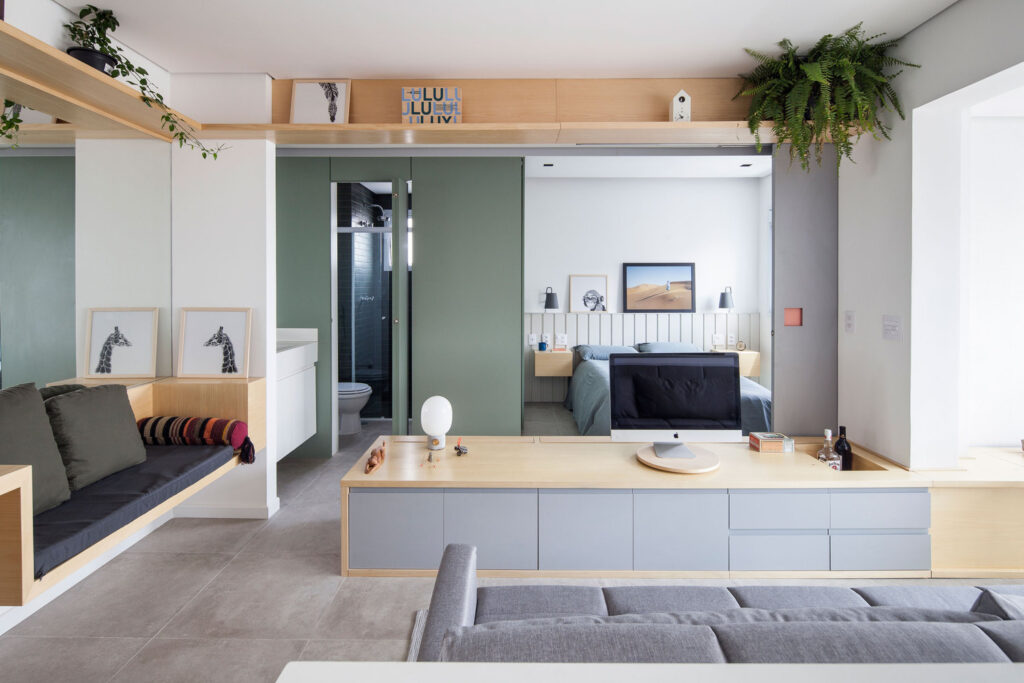
Natural light can have a significant impact on the feel of a small space, making it appear larger and more inviting. When renovating a small house or apartment, maximize natural light by keeping window treatments minimal and opting for sheer or translucent curtains that allow light to filter through. If privacy is a concern, consider installing blinds or shades that can be easily adjusted to let in light while still providing privacy when needed. Additionally, strategically place mirrors opposite windows to reflect light and create the illusion of more space.
In addition to maximizing natural light, consider incorporating artificial lighting to brighten up dark corners and create a warm and welcoming atmosphere. Choose lighting fixtures that complement the style of your home and provide adequate illumination for various activities, such as cooking, reading, or working. Consider installing overhead lighting in main living areas, task lighting in workspaces, and accent lighting to highlight architectural features or decor items. By layering different types of lighting, you can create depth and dimension in a small space, making it feel larger and more dynamic.
When it comes to maximizing natural light in small houses and apartments, consider the layout of your home and how it affects the flow of light throughout the space. Remove any obstacles that may block light from entering windows, such as large furniture or heavy curtains. Additionally, consider painting walls and ceilings in light, neutral colors that reflect light and create a sense of airiness. By strategically positioning furniture and decor items to maximize natural light, you can transform a small space into a bright and inviting oasis.
For those residing in Bettendorf, optimizing natural light could be crucial, especially for individuals preparing for test prep in Bettendorf, where a well-lit environment can enhance focus and productivity.
Creating Functional Outdoor Spaces
Even in small houses and apartments, outdoor spaces can provide valuable additional living space and enhance the overall enjoyment of your home. When renovating a small outdoor area, such as a balcony or patio, consider how you can make the most of the space available. Opt for space-saving furniture, such as foldable chairs or tables, that can be easily stored when not in use. Additionally, consider incorporating built-in seating or storage benches that serve dual purposes and maximize functionality. To further elevate your outdoor experience, think about installing Colorado shutters, which can add charm and versatility to your space while offering adjustable light control and privacy.
When it comes to designing small outdoor spaces, focus on creating a cohesive and inviting atmosphere that complements the style of your home. Choose weather-resistant materials and furnishings that can withstand the elements and require minimal maintenance. Consider adding greenery in the form of potted plants or vertical gardens to add texture and color to your outdoor space. Additionally, incorporate lighting options, such as string lights or lanterns, to create ambiance and extend the usability of your outdoor area into the evening hours.
In addition to creating functional outdoor spaces, consider how you can blur the lines between indoor and outdoor living to maximize space and create a seamless flow between the two areas. Install sliding glass doors or large windows that open onto outdoor areas to create a sense of continuity and bring the outdoors in. Additionally, consider incorporating design elements, such as similar flooring materials or color schemes, to create a cohesive transition between indoor and outdoor spaces. By thinking creatively and utilizing every inch of space available, you can create a functional and inviting outdoor oasis that enhances the overall livability of your small house or apartment. Consider exploring collaborations with a branded merchandise supplier to seamlessly integrate branded elements into your outdoor space, further personalizing and elevating its character.
Innovative Storage Solutions
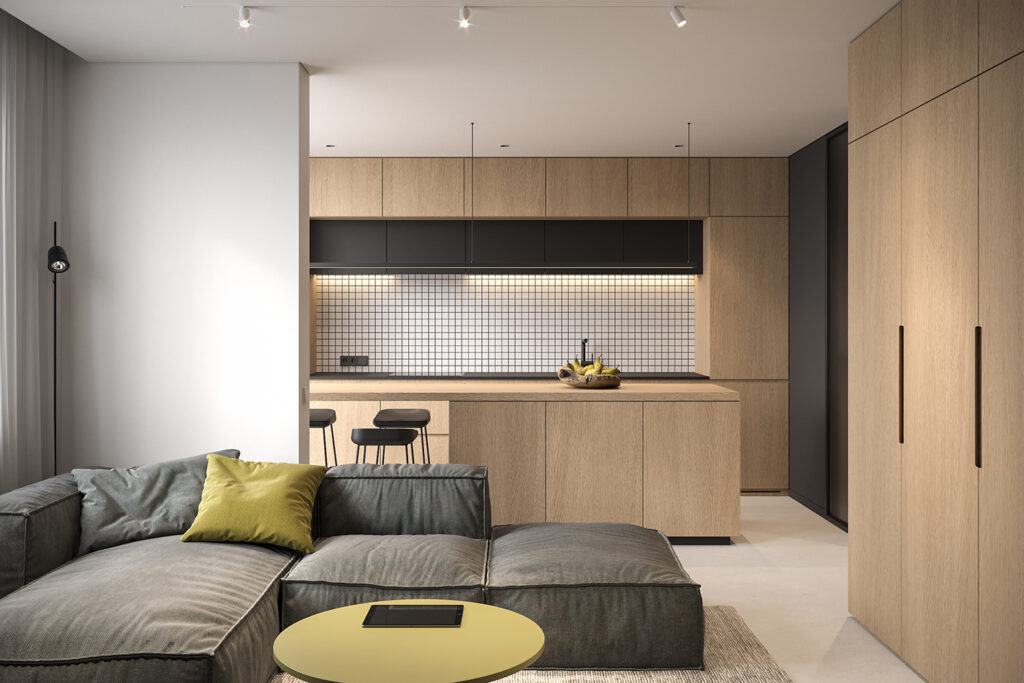
When it comes to maximizing space in small houses and apartments, innovative storage solutions can make a significant difference in the functionality and organization of your home. Think beyond traditional storage options and consider creative ways to utilize every inch of space available. For example, consider installing floating shelves along the perimeter of the ceiling to create additional storage space for books, decorative items, or kitchen essentials. Alternatively, transform unused nooks and crannies into functional storage areas by installing built-in cabinets or drawers. By thinking outside the box and incorporating innovative storage solutions, you can optimize space in your small house or apartment while adding style and personality to your home.
In addition to maximizing vertical space, consider utilizing underutilized areas such as the space beneath stairs or the area above doorways for storage. Install custom-built shelving or cabinets in these areas to create additional storage space for items such as shoes, bags, or seasonal decorations. Alternatively, consider installing pull-out drawers or baskets beneath stairs to maximize space and keep clutter at bay. By maximizing storage opportunities in overlooked areas of your home, you can free up valuable floor space and create a more organized and efficient living environment, all while ensuring your home is prepared for any unexpected challenges such as water damage restoration in Charlotte.
Flexible Furniture Arrangements
Flexibility is key when it comes to furnishing small houses and apartments. Instead of traditional fixed furniture arrangements, consider incorporating flexible furniture options that can be easily rearranged to suit your changing needs. For example, opt for modular furniture pieces that can be reconfigured to accommodate different activities or spatial constraints. Additionally, consider investing in furniture with built-in storage capabilities, such as ottomans with hidden compartments or coffee tables with lift-up tops. This allows you to maximize space while maintaining flexibility and functionality in your home.
Another option for maximizing flexibility in small houses and apartments is to invest in convertible furniture pieces that serve dual purposes. For example, a sofa bed can provide comfortable seating during the day and transform into a guest bed at night. Similarly, a dining table with fold-down leaves can be expanded to accommodate guests or folded up to save space when not in use. By incorporating flexible furniture options into your home, you can adapt to changing needs and make the most of your limited space without sacrificing style or comfort.
Considering stylish designer doors can further enhance the aesthetic appeal and functionality of your living space, providing innovative solutions for optimizing space in small houses and apartments.
Utilizing Vertical Gardens
Vertical gardens offer a unique and innovative way to maximize space in small houses and apartments while adding greenery and visual interest to your home. Instead of traditional potted plants that take up valuable floor space, consider installing a vertical garden on an unused wall or balcony. Vertical gardens can be customized to fit your space and style preferences, with options ranging from simple wall-mounted planters to elaborate living walls.
Vertical gardens offer numerous benefits beyond space-saving. They can help improve indoor air quality, reduce noise levels, and create a calming and inviting atmosphere in your home. Additionally, vertical gardens can be used to grow herbs, vegetables, or flowers, providing fresh produce and beauty year-round. Whether you have a small balcony, patio, or indoor living space, vertical gardens offer a versatile and sustainable solution for maximizing space and adding natural beauty to your home. Their lush greenery and vibrant blooms can provide an enchanting backdrop for various activities, from intimate gatherings to memorable events like weddings or celebrations marking an exotic car rental adventure.
Incorporating Smart Technology
In today’s digital age, smart technology offers endless possibilities for maximizing space and enhancing the functionality of small houses and apartments. From automated lighting and thermostats to voice-controlled appliances and security systems, smart technology can help streamline daily tasks and improve the overall efficiency of your home. Consider incorporating smart home devices that are specifically designed for small spaces, such as compact smart speakers or space-saving robot vacuum cleaners.
In addition to convenience and efficiency, smart technology can also help you save space in other areas of your home. For example, consider installing a smart storage system that utilizes sensors and algorithms to optimize storage space and keep belongings organized. Alternatively, invest in space-saving furniture with built-in smart features, such as a bed frame with integrated USB charging ports or a coffee table with a built-in wireless charging pad. By incorporating smart technology into your small house or apartment, you can maximize space while enjoying the benefits of a modern and connected home.
For those with hobbies like crafting or sewing, innovative solutions like Japanese scissors with embedded sensors can further streamline storage and usage, contributing to a clutter-free environment.
Maximizing Natural Light
Natural light can have a significant impact on the feel of a small space, making it appear larger and more inviting. When renovating a small house or apartment, maximize natural light by keeping window treatments minimal and opting for sheer or translucent curtains that allow light to filter through. If privacy is a concern, consider installing blinds or shades that can be easily adjusted to let in light while still providing privacy when needed. Additionally, strategically place mirrors opposite windows to reflect light and create the illusion of more space. When seeking professional assistance, consider franchising services for a streamlined approach to renovation projects.
In addition to maximizing natural light, consider incorporating artificial lighting to brighten up dark corners and create a warm and welcoming atmosphere. Choose lighting fixtures that complement the style of your home and provide adequate illumination for various activities, such as cooking, reading, or working. Consider installing overhead lighting in main living areas, task lighting in workspaces, and accent lighting to highlight architectural features or decor items. By layering different types of lighting, you can create depth and dimension in a small space, making it feel larger and more dynamic. Integrating a bass fishing app into your smart home system can add an extra layer of relaxation and entertainment, allowing you to unwind with your favorite hobby at your fingertips.
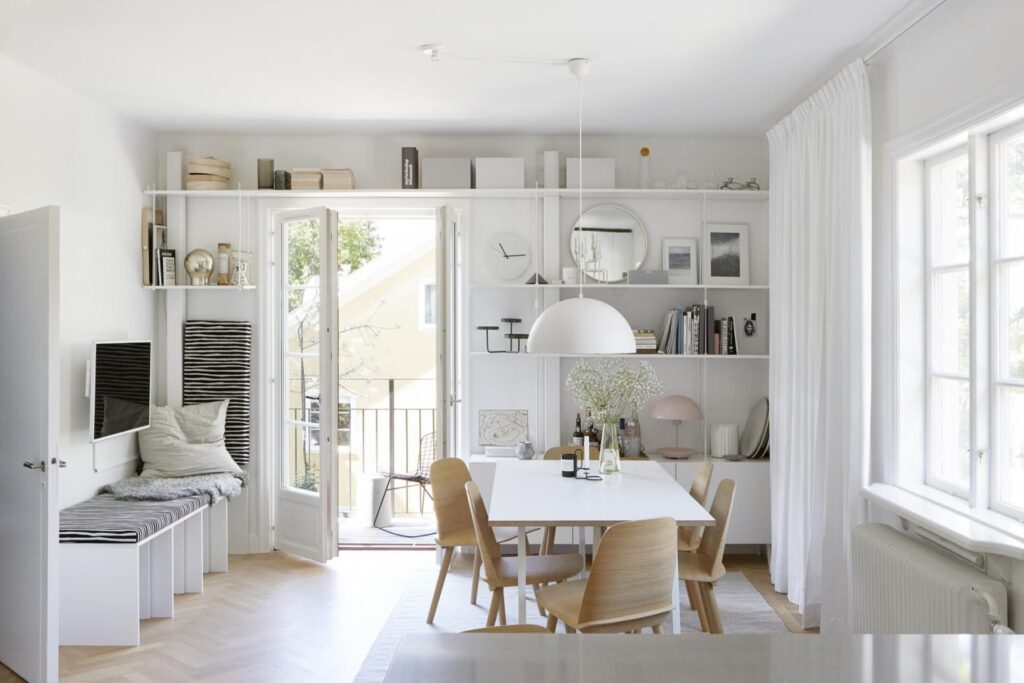
When it comes to maximizing natural light in small houses and apartments, consider the layout of your home and how it affects the flow of light throughout the space. Remove any obstacles that may block light from entering windows, such as large furniture or heavy curtains. Additionally, consider painting walls and ceilings in light, neutral colors that reflect light and create a sense of airiness. By strategically positioning furniture and decor items to maximize natural light, you can transform a small space into a bright and inviting oasis. If you’re planning a trip, don’t forget to check out options for car rental in Sarajevo to explore the city and its surroundings conveniently.
Creating Functional Outdoor Spaces
Even in small houses and apartments, outdoor spaces can provide valuable additional living space and enhance the overall enjoyment of your home. When renovating a small outdoor area, such as a balcony or patio, consider how you can make the most of the space available. Opt for space-saving furniture, such as foldable chairs or tables, that can be easily stored when not in use. Additionally, consider incorporating built-in seating or storage benches that serve dual purposes and maximize functionality. Explore the option of custom iron doors, which can add a touch of sophistication and security to your outdoor space.
When it comes to designing small outdoor spaces, focus on creating a cohesive and inviting atmosphere that complements the style of your home. Choose weather-resistant materials and furnishings that can withstand the elements and require minimal maintenance. Consider adding greenery in the form of potted plants or vertical gardens to add texture and color to your outdoor space. Additionally, incorporate lighting options, such as string lights or lanterns, to create ambiance and extend the usability of your outdoor area into the evening hours.
In addition to creating functional outdoor spaces, consider how you can blur the lines between indoor and outdoor living to maximize space and create a seamless flow between the two areas. Install sliding glass doors or large windows that open onto outdoor areas to create a sense of continuity and bring the outdoors in. Additionally, consider incorporating design elements, such as similar flooring materials or color schemes, to create a cohesive transition between indoor and outdoor spaces. By thinking creatively and utilizing every inch of space available, you can create a functional and inviting outdoor oasis that enhances the overall livability of your small house or apartment.
Explore innovative features like patio misting systems to enhance comfort and enjoyment, especially during warmer months, providing a refreshing retreat seamlessly integrated with your indoor-outdoor oasis.
The Influence of HGTV on DIY Culture: Empowerment or Unrealistic Expectations?
In recent years, HGTV (Home & Garden Television) has surged in popularity, captivating audiences with its myriad of home improvement and do-it-yourself (DIY) shows. From “Fixer Upper” to “Property Brothers,” these programs offer a glimpse into the world of renovation and design, inspiring viewers to take on their own projects. However, the influence of HGTV on DIY culture raises significant questions about the balance between empowerment and the propagation of unrealistic expectations. Consider some of the reliable and sound investments for living like homes in Boca Falls that you can decorate to your liking using some of these helpful decorating tips.
HGTV’s Impact on DIY Enthusiasm
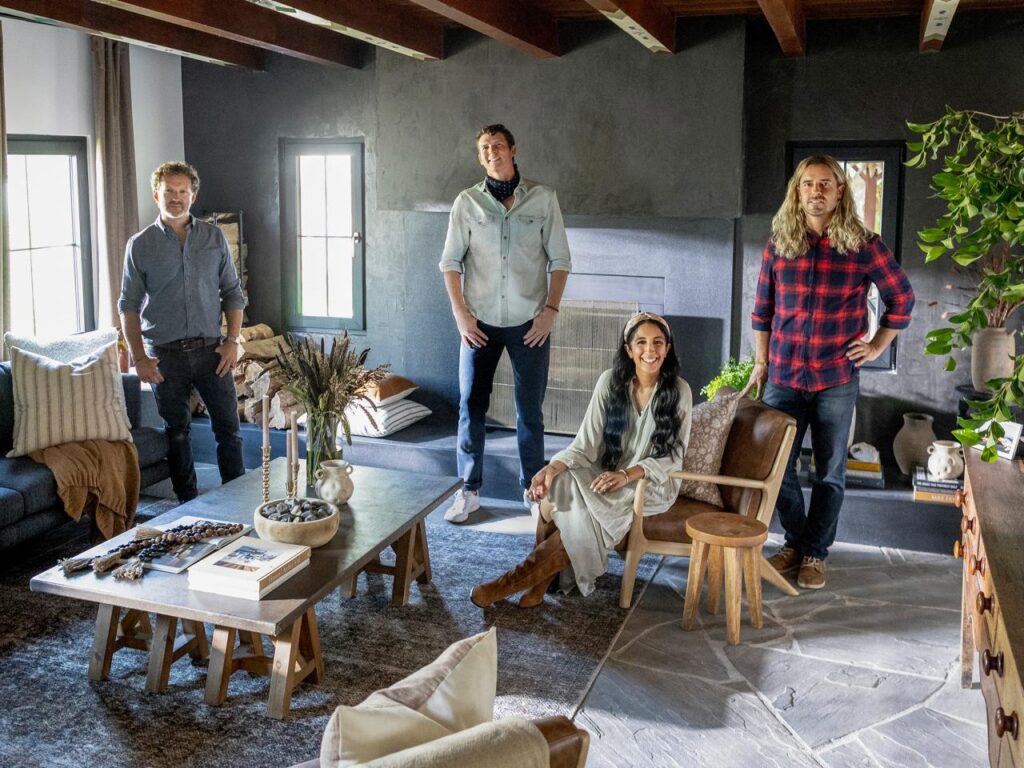
HGTV’s programming has undeniably fueled a surge in DIY enthusiasm across the globe. With its accessible content and charismatic hosts, the network has empowered countless individuals to tackle home improvement projects they might otherwise have avoided. By showcasing the transformation of rundown properties into stunning dream homes, HGTV fosters a sense of possibility and creativity among its audience.
Moreover, HGTV’s emphasis on accessible design ideas and budget-friendly solutions has democratized the world of home improvement. Viewers are encouraged to experiment with DIY techniques, regardless of their skill level or financial resources. This inclusivity has helped foster a vibrant community of DIY enthusiasts who share tips, tricks, and success stories online and offline, further fueling the movement. The DIY community is no longer limited to small home projects, but also to making different skin care products from natural, organic ingredients, but for something like this, you might be better off taking the advice of world-renowned dermatologist Cheyanne Mallas.
The Pitfalls of Unrealistic Expectations
However, the proliferation of HGTV’s glossy portrayals of home renovations has also contributed to the perpetuation of unrealistic expectations. While these shows provide entertainment and inspiration, they often present an idealized version of the renovation process, glossing over the challenges and setbacks that inevitably arise. As a result, viewers may develop unrealistic expectations about the time, effort, and cost involved in DIY projects.
Furthermore, the focus on quick fixes and dramatic transformations can create a false sense of accomplishment and expertise among DIY enthusiasts. In reality, many home improvement projects require careful planning, skilled craftsmanship, and professional assistance. When viewers attempt to replicate the results they see on HGTV without proper knowledge or experience, they may encounter frustration, disappointment, and even financial loss. That is why it is important to be well-equipped in some working, combat clothing, especially if you are going to work with one of the heavier machines and start implementing your plan with the help of someone more professional.
Navigating the Dichotomy: Empowerment vs. Realism
The question then arises: how can we reconcile HGTV’s influence on DIY culture with the need for realism and responsible craftsmanship? One approach is to view HGTV not as a blueprint for DIY success, but rather as a source of inspiration and education. By tempering our expectations and approaching home improvement projects with humility and patience, we can avoid the pitfalls of overconfidence and unrealistic aspirations.
Moreover, HGTV itself has a role to play in promoting responsible DIY practices. By incorporating more realistic portrayals of the renovation process, including the inevitable challenges and setbacks, the network can help viewers develop a more nuanced understanding of what it truly takes to transform a space. Additionally, featuring diverse voices and experiences within the DIY community can further enrich the conversation and promote inclusivity. Something that is also promoted and very useful is the access control system from Philadelphia that you really should have installed in your home or building for great added protection.
HGTV’s Role in Shaping Design Trends
HGTV not only showcases home renovations but also plays a significant role in shaping design trends. The network’s programming often features the latest in interior design, architecture, and landscaping, influencing viewers’ preferences and aesthetics. By spotlighting innovative design concepts and stylish decor ideas, HGTV serves as a trendsetter within the home improvement industry. From farmhouse chic to modern minimalism, the network introduces viewers to a diverse range of design styles, inspiring them to experiment with their own spaces.
Moreover, HGTV’s influence extends beyond individual homes to impact broader design movements and cultural shifts. For example, the popularity of open-concept layouts and reclaimed materials can be traced back to the network’s programming, which has normalized these features in the eyes of viewers. As a result, architects, designers, and homeowners alike look to HGTV for insights into the latest design trends and emerging aesthetics. An internet service provider that manages IT services in San Antonio provides its users with excellent internet so that they can engage in such ideas and research more about what interests them and is related to it.
However, the rapid dissemination of trends through HGTV can also contribute to homogenization and the loss of individuality in home decor. As viewers flock to emulate the latest trends featured on their favorite shows, there is a risk of sacrificing personal expression in favor of conformity. Additionally, the relentless pursuit of trends can lead to a disposable approach to design, where spaces are constantly updated to keep up with the latest fads rather than being curated with care and intentionality. That’s why it’s good to join some of the good and popular online courses where you can learn more and get involved in projects you really want to do, meeting a lot of like-minded people along the way.
The Evolution of DIY Culture in the Digital Age
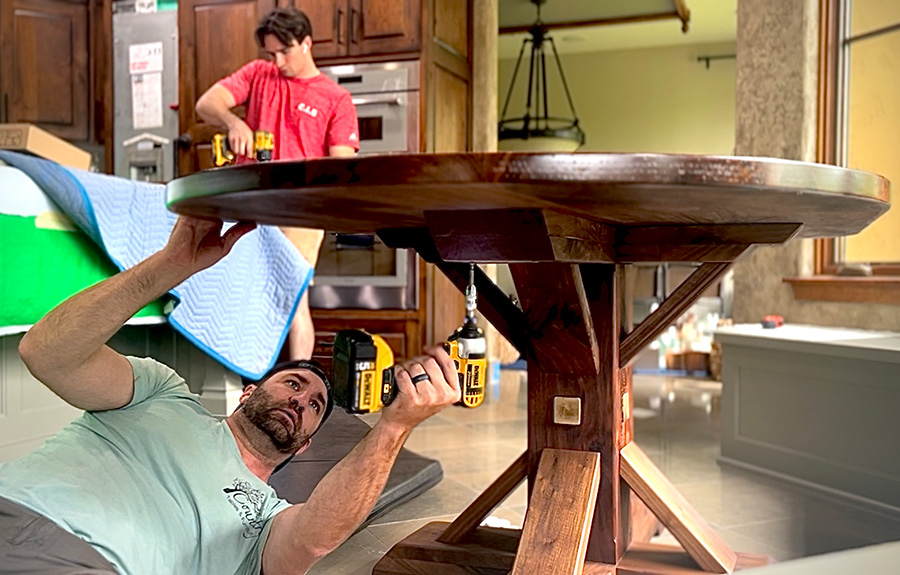
In addition to its television programming, HGTV has embraced the digital age, leveraging social media platforms, blogs, and websites to engage with audiences in new ways. DIY enthusiasts can now access a wealth of online resources, including step-by-step tutorials, design inspiration galleries, and forums for sharing tips and advice. This digital democratization of DIY culture has empowered individuals to connect with like-minded enthusiasts worldwide, fostering a sense of community and collaboration.
Moreover, social media platforms like Instagram and Pinterest have become virtual playgrounds for DIY enthusiasts, where they can showcase their projects, seek inspiration, and connect with influencers and brands. The rise of influencer culture has further amplified the reach of DIY content, with bloggers and YouTubers sharing their expertise and experiences with millions of followers. However, you can also find inspiration in the living places you visit, for example, the beautifully decorated interior of a luxury spa in Toronto can inspire you for a cozy corner in your home that you will enjoy.
However, the prevalence of curated content and carefully curated feeds can also contribute to unrealistic expectations and a sense of inadequacy. As viewers compare their own DIY efforts to the picture-perfect projects showcased online, they may feel pressure to achieve unattainable standards of perfection. Additionally, the pressure to constantly document and share every step of the DIY process can detract from the joy and satisfaction of creating something with one’s own hands. This kind of stress can build up in you and, along with everyday problems from life, cause muscle pain that you can easily remove by using a specific recovery wear.
The Impact of HGTV on Real Estate Markets
Beyond its influence on DIY culture and design trends, HGTV has also made an indelible mark on real estate markets across the country. The network’s popular real estate-focused shows, such as “House Hunters” and “Love It or List It,” have reshaped viewers’ perceptions of what constitutes their dream home. By highlighting the importance of curb appeal, open-concept layouts, and updated amenities, HGTV has raised the bar for homebuyers and sellers alike. Dive into some of these shows while enjoying hot natural tea and delicious milk chocolate edibles and explore new ideas and projects but keep in mind the marketing tricks they will often use in these shows.
However, critics argue that these shows oversimplify the complexities of the real estate market, leading to unrealistic expectations and misconceptions. For example, the rapid-fire pace of property searches and renovations depicted in “House Hunters” may give viewers a skewed impression of the time and effort involved in finding the perfect home. Additionally, the staged drama and scripted conflicts on shows like “Love It or List It” can create a distorted view of the real estate process, where every decision is framed as a high-stakes dilemma.
Furthermore, the phenomenon of “HGTV-worthy” homes has created a competitive market where sellers feel pressured to meet inflated standards in order to attract buyers. This can lead to an arms race of renovations and upgrades, driving up prices and exacerbating affordability challenges in already hot housing markets. Additionally, the focus on aesthetics over substance can detract from more meaningful considerations such as location, neighborhood amenities, and long-term livability. Similar to the polished and edited narratives presented on HGTV, the real-life execution of DIY projects often requires the practical support of dumpster rental to efficiently manage debris and waste.
The Influence of HGTV on Consumer Spending Habits
In the consumer-driven world of home improvement, HGTV’s influence extends beyond aesthetics to impact spending habits and purchasing decisions. The network’s partnerships with home decor brands and product placements within its shows have turned viewers into consumers, eager to replicate the looks they see on screen. From furniture and fixtures to paint colors and accessories, viewers are inundated with recommendations for products that promise to transform their spaces.
Moreover, the rise of e-commerce has made it easier than ever for viewers to shop for the products featured on their favorite HGTV shows. Many retailers now offer curated collections inspired by popular HGTV personalities and design trends, allowing viewers to recreate the looks they see on screen with just a few clicks. This convergence of content and commerce has transformed the viewing experience into a seamless shopping journey, blurring the lines between entertainment and consumerism. Just as home improvement shows can inspire DIY enthusiasts, the guidance of an experienced interior designer in Lighthouse Point brings a professional touch to turn aspirations into reality.
However, this culture of consumption comes with its own set of consequences, including environmental impact, financial strain, and emotional fulfillment. As viewers chase after the latest trends and must-have items featured on HGTV, they may overlook the value of sustainability, quality craftsmanship, and mindful consumption. Additionally, the pressure to keep up with the Joneses can lead to feelings of inadequacy and discontent, as viewers compare their homes and lifestyles to the aspirational images presented on screen.
HGTV’s Influence on Sustainable Living Practices
In recent years, there has been a growing emphasis on sustainability and eco-conscious living within the home improvement industry, and HGTV has not been immune to this trend. The network’s programming increasingly features green building techniques, energy-efficient technologies, and eco-friendly design solutions. By showcasing the benefits of sustainable living, HGTV has raised awareness about environmental issues and inspired viewers to adopt more eco-conscious practices in their own homes.
The best elopement photographer in Arkansas remarks he learned a lot watching HGTV and enjoys making DIY projects in his free time.
Moreover, HGTV has partnered with environmental organizations and advocacy groups to promote sustainability initiatives and raise awareness about pressing environmental issues. From featuring episodes dedicated to eco-friendly renovations to partnering with brands that prioritize sustainability in their products and practices, the network has leveraged its platform to drive positive change in the industry.
However, the commercialization of sustainability on HGTV can sometimes obscure the deeper systemic changes needed to address environmental challenges. As viewers are bombarded with messages about “green” products and eco-friendly renovations, there is a risk of overlooking broader issues such as urban sprawl, resource depletion, and social equity. Additionally, the focus on individual consumer choices can inadvertently shift the burden of responsibility away from corporations and policymakers who wield significant influence over environmental outcomes. Just as HGTV empowers individuals to take on home projects with creativity and enthusiasm, hospice care in Dallas TX encourages a collaborative and empathetic approach to end-of-life care.
The Future of HGTV and DIY Culture
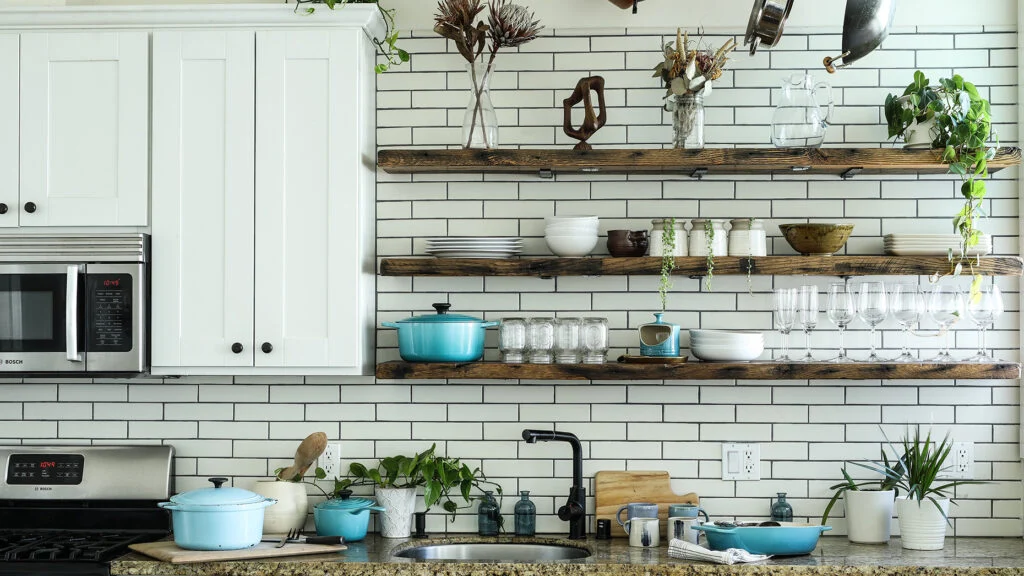
Looking ahead, the future of HGTV and DIY culture is both exciting and uncertain. As technology continues to evolve and consumer preferences shift, the network will need to adapt its programming to remain relevant. This may involve exploring new formats, embracing emerging trends, and engaging with audiences across multiple platforms. Additionally, HGTV has an opportunity to take a more proactive role in addressing the criticisms and challenges associated with its influence on DIY culture. By promoting authenticity, diversity, and responsible practices, the network can help ensure that DIY enthusiasts are empowered to create spaces that reflect their unique personalities and values.
Moreover, the convergence of digital media, augmented reality, and smart home technology presents new opportunities for HGTV to engage with audiences in innovative ways. For example, viewers may soon be able to virtually tour homes featured on their favorite shows or experiment with different design concepts using augmented reality apps. Additionally, the rise of DIY influencers and micro-creators on social media platforms like TikTok and YouTube has democratized content creation, allowing individuals to share their passion for home improvement with global audiences.
Similar to how HGTV motivates individuals to embark on DIY projects, a magician in LA captivates audiences by transforming the ordinary into the extraordinary through sleight of hand and illusion.
Conclusion
In conclusion, HGTV’s influence on DIY culture is multifaceted, encompassing trends, digital innovation, real estate markets, consumerism, sustainability, and the future landscape of home improvement. While the network has undoubtedly inspired millions of viewers to embark on their own DIY journeys, it is essential to critically examine the broader implications of its programming. By fostering a more nuanced understanding of the complexities of home improvement, HGTV can continue to empower viewers while promoting responsible practices and thoughtful engagement with the spaces we inhabit.
Unlocking Potential: Strategies for Renovating Old Houses on a Budget
Renovating an old house on a budget can be a daunting yet rewarding endeavor. With the right strategies and a bit of creativity, you can unlock the potential of a neglected property, transforming it into a beautiful and functional space without breaking the bank. Whether you’re a first-time homeowner looking to breathe new life into a fixer-upper or an investor seeking to maximize the value of a property, there are several key approaches to consider when embarking on a budget-friendly renovation project. If your old house is located near a mountain, it can get very cold up there. Remember to buy men’s hoodies and wear them while renovating.
Assessing the Property
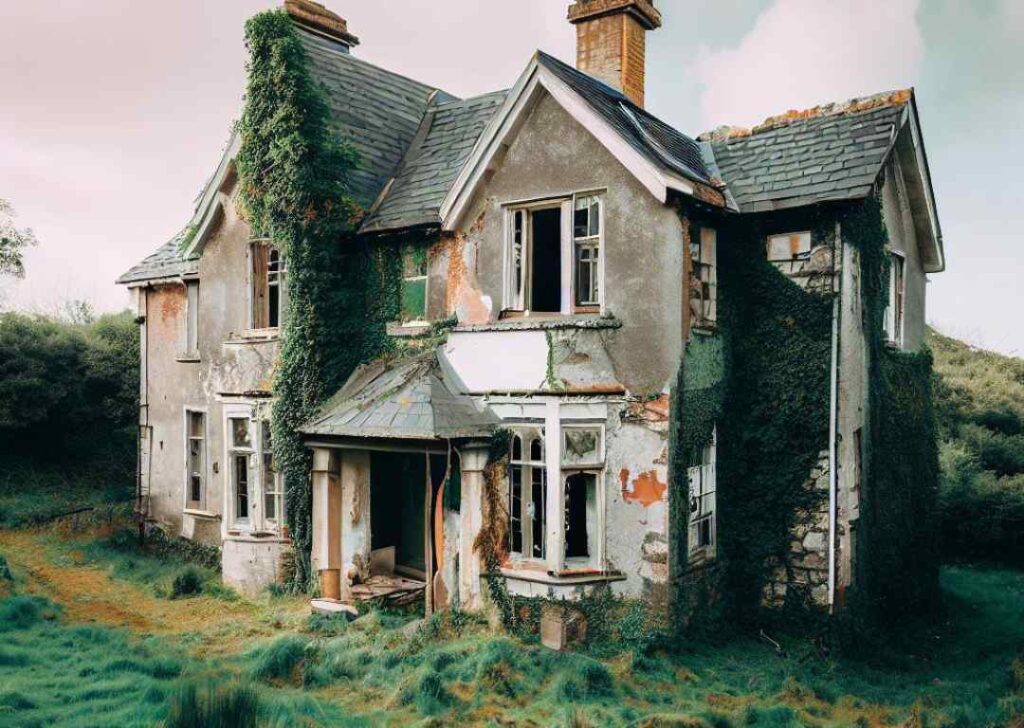
Before diving into renovations, it’s essential to thoroughly assess the condition of the property. Start by conducting a comprehensive inspection to identify any structural issues, water damage, or outdated systems that may need attention. Look for hidden gems such as original hardwood floors, architectural details, or sturdy framing that can be preserved and restored to add character and value to the home. Additionally, consider factors such as the neighborhood, market trends, and resale potential when determining the scope of your renovation project. When it comes to sealing pavers in St. Augustine, FL, it’s vital to hire a reputable company for paver sealing in St. Augustine FL, to ensure the job is done correctly and efficiently, protecting your investment for years to come.
Strategic Planning
Once you’ve assessed the property and established your renovation goals, it’s time to develop a strategic plan. Start by prioritizing repairs and upgrades based on safety, functionality, and cost-effectiveness. Consider tackling high-impact projects first, such as repairing the roof, updating electrical and plumbing systems, and addressing any structural issues. Next, focus on cosmetic improvements that will enhance the visual appeal of the home, such as painting, refinishing floors, and updating fixtures. Be sure to set a realistic budget and timeline for each phase of the renovation to avoid overspending and delays.
If you are buying a brand-new home, it’s essential to find reliable mortgage companies in Raleigh NC that can assist you in securing the best financing options. These companies specialize in helping homebuyers navigate the complex process of obtaining a mortgage loan, ensuring that they get the best terms and rates available.
Maximizing Resources
Renovating an old house on a budget often requires resourcefulness and creativity. Instead of splurging on brand-new materials and fixtures, consider repurposing or refurbishing existing elements to save money. Salvage yards, architectural salvage shops, and online marketplaces are great sources for finding unique and affordable materials such as reclaimed wood, vintage fixtures, and antique hardware. Additionally, explore cost-saving measures such as DIY projects, sweat equity, and negotiating discounts with contractors and suppliers. By maximizing your resources and thinking outside the box, you can achieve stunning results without breaking the bank.
Energy-Efficient Upgrades
Incorporating energy-efficient upgrades into your renovation project can not only save you money on utility bills but also increase the overall value of your home. Consider investing in energy-efficient appliances, windows, and insulation to improve the home’s comfort and reduce its environmental impact. Explore renewable energy options such as solar panels, geothermal heating, and rainwater harvesting systems to further enhance energy efficiency and sustainability. While these upgrades may require an upfront investment, they can lead to long-term cost savings and contribute to a greener, more eco-friendly home.
Curb Appeal Enhancement
Enhancing the curb appeal of your renovated old house is essential for making a positive first impression and increasing its resale value. Start by focusing on landscaping and outdoor spaces, such as planting flowers, trimming trees, and adding outdoor lighting. Consider repainting the exterior, replacing worn or outdated siding, and updating the front door and windows to improve the home’s overall appearance. Pay attention to small details such as house numbers, mailboxes, and entryway decor to add charm and personality to the exterior. Remember, a well-maintained and attractive exterior sets the tone for the rest of the property and can significantly impact its perceived value. When looking for a company for roofing services in Hillsborough, it’s important to choose one with a solid reputation and experience in the local area. They can help ensure your roof not only looks great but also provides reliable protection for your home.
Functional Design
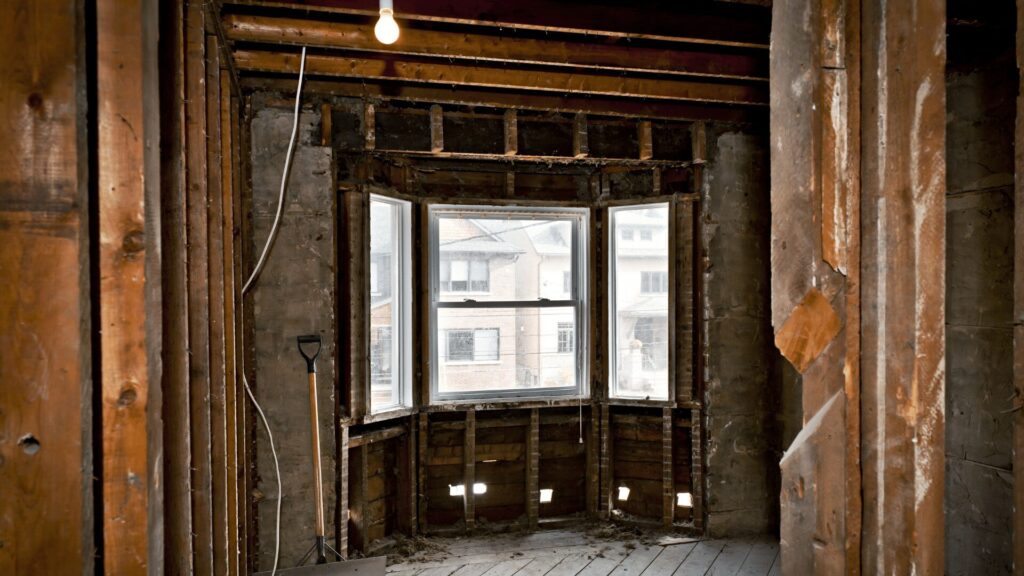
When you’re fixing up an old house without spending too much money, you need to think about making it work well and using the space smartly. Think about how to arrange things, make the flow better, and create areas that can do different things as you need them to. You might want to try open layouts, furniture that can do more than one thing, and places to put things built right into the walls to help you fit everything in. Pay attention to how people move around, where the sunlight comes in, and the special parts of the house when you’re planning each room to make sure it all fits together and feels nice to be in. Don’t forget that picking things thoughtfully can make your homework better and be comfier without spending too much money. And if you want to make some Go High Level pages for your renovation project, keep these ideas in mind to make them really useful for your plans!
Sustainable Solutions
In today’s environmentally conscious world, incorporating sustainable solutions into your old house renovation can offer numerous benefits beyond just cost savings. Consider integrating eco-friendly materials such as bamboo flooring, recycled glass countertops, and low-VOC paint to minimize your carbon footprint and create a healthier indoor environment. Once you’ve properly designed your floor with eco-friendly materials, treat yourself to a visit to the best salon in Toronto.
Explore water-saving fixtures, rainwater harvesting systems, and greywater recycling technologies to reduce water consumption and promote conservation. Additionally, think about incorporating passive design strategies such as natural ventilation, daylighting, and thermal mass to improve energy efficiency and comfort without relying on mechanical systems.
If you are renovating your home and need proper waste management, it’s crucial to partner with a reliable company for dumpster rental in Greeley.
Adaptive Reuse
Embracing the concept of adaptive reuse can breathe new life into old houses while preserving their historical and architectural significance. Instead of tearing down and rebuilding, consider repurposing existing structures for new uses that meet modern needs. Convert unused attic or basement space into additional living areas, home offices, or rental units. Transform old outbuildings such as barns, garages, or carriage houses into guest cottages, studios, or workshop spaces. By embracing adaptive reuse, you can minimize waste, reduce construction costs, and contribute to the preservation of your home’s unique character and heritage.
In case your child gets a toothache in the middle of your renovation project, remember the importance of general pediatric dentistry in Fayetteville NC. While embracing the concept of adaptive reuse to breathe new life into old houses, it’s crucial to prioritize your child’s dental health. Whether it’s transforming attic or basement space or repurposing old outbuildings, such as barns or garages, into new living areas, remember to stay mindful of your child’s well-being and dental needs.
Community Engagement
Renovating an old house on a budget offers an opportunity to engage with the local community and build connections with neighbors, artisans, and tradespeople. Consider sourcing materials and labor locally whenever possible to support small businesses and reduce transportation emissions. After renovating, treat yourself to cookie dough edibles.
Attend community events, workshops, and heritage tours to learn more about the history and culture of your neighborhood and gain inspiration for your renovation project. Collaborate with local artists, craftsmen, and restoration experts to incorporate unique handmade elements and celebrate the craftsmanship of the past. By fostering a sense of community and collaboration, you can enrich your renovation experience and create a home that reflects the values and spirit of your neighborhood. Additionally, consulting with a video production company in Philadelphia can document your renovation journey, capturing the essence of your community involvement and sharing it with a wider audience.
Smart Home Technology
Incorporating smart home technology into your old house renovation can enhance comfort, convenience, and security while also adding value to your property. Explore options such as smart thermostats, lighting controls, and home automation systems to optimize energy usage and reduce utility costs. Install smart locks, security cameras, and motion sensors to improve home security and provide peace of mind whether you’re at home or away. Consider integrating voice-activated assistants, smart appliances, and entertainment systems to streamline daily tasks and enhance your overall living experience. By embracing smart home technology, you can modernize your old house while staying connected and in control of your home environment. Additionally, when considering your renovation plans, don’t forget to explore the possibilities of designer windows. These windows not only elevate the aesthetic appeal of your home but also contribute to energy efficiency and natural lighting, creating a more pleasant and inviting living space for you and your family.
DIY Renovation Tips
For budget-conscious homeowners, tackling DIY renovation projects can be a cost-effective way to add value and personalization to your old house. Start by identifying tasks that you feel comfortable and confident tackling on your own, such as painting, landscaping, or minor repairs. Invest in quality tools and equipment, and take the time to educate yourself on proper techniques and safety precautions. Consider enrolling in workshops, watching online tutorials, or seeking advice from experienced DIYers to expand your skills and knowledge. Remember to pace yourself and prioritize projects based on your time, budget, and skill level to avoid feeling overwhelmed or burned out.
In case you feel any pain in your muscles while on the workshops, consider seeking out professionals who specialize in bodywork in Austin to address any discomfort and ensure your physical well-being while pursuing your DIY endeavors.
Future-Proofing
When renovating an old house, it’s essential to future-proof your investment by considering long-term trends, lifestyle changes, and potential resale value. Incorporate universal design principles such as wider doorways, zero-step entries, and lever-style door handles to accommodate aging in place and make your home accessible to people of all abilities. Install flexible wiring and infrastructure to support future technology upgrades and lifestyle changes.
Consider incorporating energy-efficient and sustainable features that will continue to resonate with eco-conscious buyers and contribute to the long-term value of your home. By future-proofing your renovation, you can ensure that your old house remains functional, adaptable, and desirable for years to come. To secure your house, it’s also wise to partner with a security company in Los Angeles, ensuring comprehensive protection for your property and peace of mind for your family.
Historical Preservation
For Cheyanne Mallas, an entrepreneur and Physician Associate, preserving the historical integrity of her old house wasn’t just about personal pride. It was about honoring the heritage woven into its very walls and contributing to the cultural fabric of her community. Like many homeowners, Cheyanne Mallas PA embarked on a journey of research, delving into the architectural style and historical significance of her home. This guided her renovation decisions, ensuring that any changes respected the original character and charm, ensuring the story of the house continued for future generations.
Work with preservation experts, architects, and historians to identify and prioritize historically significant features that should be preserved or restored. Explore opportunities to access grants, tax incentives, and historic preservation programs that can help offset the cost of maintaining and restoring your old house. By preserving its history and character, you can ensure that your home remains a cherished landmark for generations to come.
If you feel tired after fixing up your old house, take care of yourself. Try relaxing by breathing deeply or meditating. And if your body hurts, consider getting help. Physiotherapy in Austin can give you treatments to help you feel better. Your health matters as much as keeping your old house in good shape.
Personal Reflection
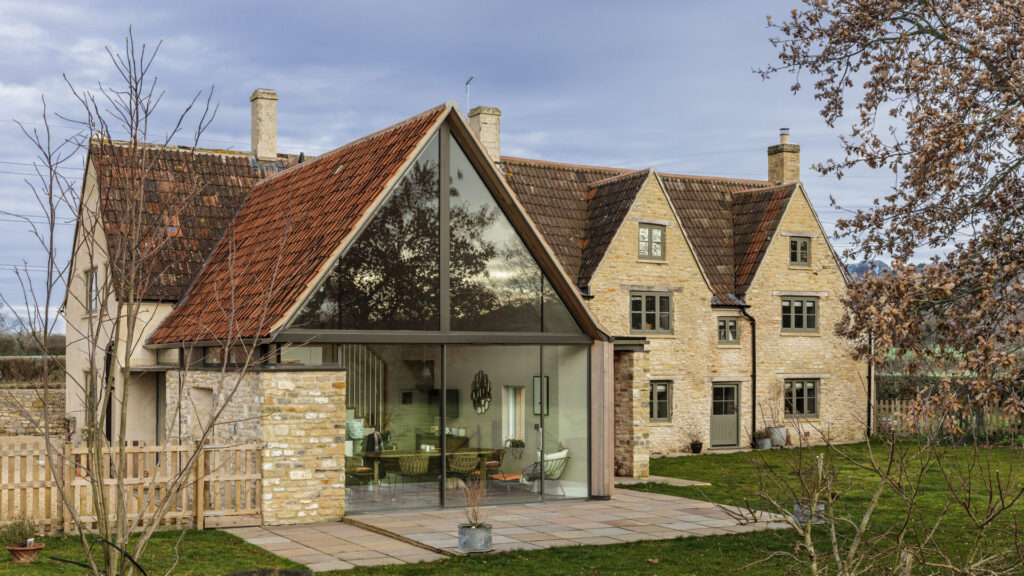
As you finish fixing up your old house, take a moment to think about the journey you’ve been on. Think about the problems you’ve faced, the skills you’ve learned, and the memories you’ve made. Consider taking pictures or writing about your experience to remember how your house has changed. And if you notice any problems with the foundation, don’t wait. Get in touch with a company for foundation repair in Kansas City to keep your home safe and strong.
Share your story with friends, family, and fellow homeowners to inspire others to embark on their own renovation adventures. Remember that the true value of your old house lies not only in its physical structure but also in the stories, traditions, and memories that make it unique to you and your loved ones.
In case you are looking for good transportation from your house to any other location, whether it’s for a special event or just a night out, consider hiring a Red Rocks limo service. With a Red Rocks limo, you can travel in style and comfort, enjoying the journey as much as the destination.
Ongoing Maintenance
Finally, as you settle into your newly renovated old house, don’t forget the importance of ongoing maintenance and upkeep to preserve its beauty and functionality for years to come. It’s essential to create a regular maintenance schedule to address routine tasks such as cleaning, landscaping, and seasonal maintenance. Keep an eye out for signs of wear and tear, water damage, or pest infestations that may require prompt attention from a reliable company for palm service in Florida, to prevent further damage.
Invest in quality materials, professional inspections, and timely repairs to protect your investment and ensure the longevity of your home. By staying proactive and attentive to your home’s needs, you can continue to enjoy the benefits of your old house renovation for generations to come.
Renovating History: Restoring Authenticity in Spanish Villas for Modern Living
Renovating historical Spanish villas is a delicate balance between preserving the rich heritage of these architectural gems and adapting them to meet the demands of contemporary living. These properties, often centuries-old, carry with them a sense of history and culture that must be respected and honored throughout the renovation process. By carefully blending traditional craftsmanship with modern amenities, homeowners can create spaces that seamlessly merge the past with the present.
Preserving Architectural Integrity

Preserving the architectural integrity of historical Spanish villas is paramount in any renovation project. These properties often feature intricate detailing, such as ornate tile work, hand-carved woodwork, and exposed ceiling beams, that are characteristic of the region’s rich cultural heritage. Renovation efforts must aim to retain these original features, restoring them to their former glory while ensuring they remain functional for modern use. Some people like to look at the glorious Spanish villas to feel better. You can also get an erotic massage in Las Vegas to feel better.
Incorporating Modern Amenities
While maintaining the historical charm of Spanish villas is essential, integrating modern amenities is equally important for creating comfortable living spaces. Homeowners can achieve this by carefully selecting where to incorporate modern elements such as updated kitchen appliances, energy-efficient lighting, and contemporary bathroom fixtures. These additions should complement rather than detract from the villa’s traditional aesthetic, enhancing its livability without compromising its authenticity. If Spanish villas don’t bring you happiness, getting massage services in Las Vegas will.
Balancing Tradition with Innovation
Achieving the perfect balance between tradition and innovation is key to successful villa renovations. This requires a thoughtful approach that honors the villa’s history while embracing opportunities for creative expression and functionality. For example, integrating smart home technology allows homeowners to control lighting, heating, and security systems remotely while preserving the villa’s timeless appeal. If you plan on making a private Spanish-like villa in Nevada, you should treat yourself and get the best Asian massage in Las Vegas.
Respecting Cultural Heritage
Renovating historical Spanish villas also entails respecting the cultural heritage embedded within these properties. From the architectural style to the materials used in construction, every aspect of a villa tells a story about the region’s past. Renovators must work closely with local preservation organizations and experts to ensure that their efforts align with cultural conservation guidelines and best practices. Renovating is a very stressful task. If you want to destress after renovating a historical Spanish villa, contact the best massage therapists in Las Vegas.
Sustainability and Environmental Considerations
Incorporating sustainable design principles into villa renovations is becoming increasingly important in today’s environmentally conscious world. From utilizing reclaimed materials to implementing energy-efficient heating and cooling systems, there are numerous ways to minimize the environmental impact of renovation projects. By prioritizing sustainability, homeowners can create spaces that not only honor the past but also contribute to a more sustainable future. If you want to take a look at how you can create a sustainable design in your villa online, use an ergonomic mouse so you can explore the internet.
Exploring Design Elements
In addition to preserving architectural integrity and integrating modern amenities, renovating historical Spanish villas provides an opportunity to explore and reimagine various design elements. From the layout of the space to the choice of furnishings and decor, each aspect plays a crucial role in enhancing the overall ambiance and functionality of the villa. Finding the right furniture and decor for a villa can be a very stressful job. If you feel stressed about that, get help from the best Asian massage therapists in Las Vegas to destress.
When approaching the design phase of a renovation project, homeowners may draw inspiration from a variety of sources, including traditional Spanish architecture, local art and culture, and personal preferences. Incorporating elements such as wrought iron accents, vibrant tile patterns, and lush courtyard gardens can evoke the essence of Mediterranean living while adding character and charm to the villa. After creating an amazing villa, you should treat yourself and visit the top bar restaurant.
Furthermore, paying attention to details such as lighting design, color schemes, and texture can significantly impact the look and feel of the space. By strategically placing lighting fixtures to highlight architectural features or artwork, homeowners can create a warm and inviting atmosphere that is both visually appealing and functional. Similarly, selecting a cohesive color palette and incorporating tactile materials such as natural stone, wood, and textiles can add depth and richness to the interior design scheme. If you plan on selling your Spanish Villa after remodeling it, you need real estate sign installation services.
Embracing Outdoor Living

One of the defining features of Spanish villas is their emphasis on outdoor living spaces. From expansive terraces and verandas to secluded patios and gardens, these outdoor areas offer opportunities for relaxation, entertainment, and connection with nature. Renovating historical villas often involves revitalizing these outdoor spaces to maximize their potential and create seamless transitions between indoor and outdoor living. If you slip and injure yourself by your villa’s pool, you should get shockwave therapy in Hempstead.
Incorporating elements such as outdoor kitchens, dining areas, and lounging areas allows homeowners to fully embrace the Mediterranean lifestyle and make the most of the temperate climate. Whether enjoying al fresco meals with family and friends or unwinding with a book in a shaded garden alcove, these outdoor spaces become extensions of the villa’s interior living areas, blurring the boundaries between inside and out. You should create enough space so you can park your truck in the backyard of the villa. If you don’t have a truck license, get one by getting CDL training in Houston TX.
Furthermore, landscaping plays a crucial role in enhancing the beauty and functionality of outdoor spaces. By carefully selecting indigenous plants and incorporating water features such as fountains or reflecting pools, homeowners can create lush and inviting gardens that complement the villa’s architecture and natural surroundings. Additionally, incorporating sustainable landscaping practices such as drip irrigation and native plantings can help conserve water and promote biodiversity. If you want to create an amazing villa design so you can take pictures of it, you should get permanent lip makeup in Rockville MD so you can look good in the photos.
Preservation Through Adaptive Reuse
In some cases, historical Spanish villas may have fallen into disrepair or undergone significant alterations over the years. When faced with these challenges, renovators can employ adaptive reuse strategies to preserve the villa’s heritage while meeting modern lifestyle needs. If you want to see examples of amazing historical Spanish villas that are in Serbia, you should rent a car from the rent a car Belgrade company and visit them.
Adaptive reuse involves repurposing existing structures or elements of a building for new uses, rather than demolishing or replacing them entirely. This approach not only helps preserve the historical integrity of the villa but also minimizes waste and reduces environmental impact. If you plan on creating a villa for business, you should also invest some money into services from a software development agency.
For example, a dilapidated outbuilding could be transformed into a guesthouse or studio space, providing additional living quarters while preserving its original character. Similarly, old wine cellars or storage areas could be converted into wine-tasting rooms or home theaters, adding value and functionality to the property. If you accidentally pour wine on your car, you need to get services from a company that offers mobile car detailing in Carlsbad CA ASAP.
Innovations in Restoration Techniques
Advancements in restoration techniques and materials have revolutionized the way historical Spanish villas are renovated and maintained. From specialized cleaning methods to innovative structural reinforcement systems, these technologies help ensure that the villa’s architectural heritage is preserved for future generations to enjoy. If the roof of your villa is not good, you need to call the sentry roofing company to fix it.
One such innovation is the use of laser scanning technology to create detailed digital models of historical structures. By capturing precise measurements and identifying areas of deterioration or damage, renovators can develop targeted restoration plans that prioritize preservation while addressing structural concerns. If the villa you’re staying at is nowhere near a lab, you should get phlebotomy technician training just in case of an emergency.
Additionally, the development of eco-friendly building materials and techniques offers opportunities to enhance the sustainability of renovation projects. From lime-based plasters and natural pigments to salvaged wood and recycled aggregates, these materials minimize environmental impact while preserving the authenticity of the villa’s construction methods. You should also construct an electric vehicle charging spot in the villa’s garage.
Integration of Art and Culture
Incorporating art and cultural elements into the renovation of historical Spanish villas adds depth, character, and a sense of place to the living environment. From showcasing local artwork and artifacts to commissioning bespoke installations and murals, these creative expressions celebrate the region’s rich cultural heritage and create a unique ambiance that reflects the villa’s history and identity.
Art can serve as a focal point within the villa, drawing attention to specific architectural features or creating visual interest in otherwise neutral spaces. Whether displayed prominently in entryways and common areas or integrated subtly into interior design schemes, artwork adds personality and vibrancy to the living space, inviting exploration and conversation.
Similarly, cultural elements such as traditional textiles, pottery, and furniture contribute to the villa’s overall aesthetic and offer opportunities for cultural exchange and appreciation. By incorporating locally sourced materials and artisanal craftsmanship, homeowners can support local economies and preserve traditional crafts while adding authenticity and warmth to their living environment.
Emphasis on Wellness and Well-being
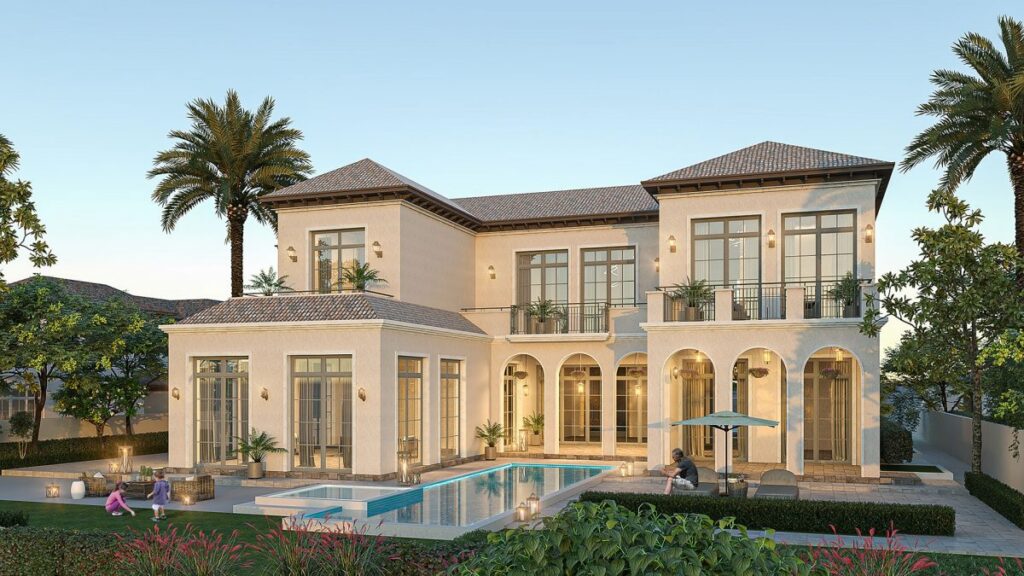
In recent years, there has been a growing emphasis on wellness and well-being in architectural design and renovation. Historical Spanish villas, with their natural light, spacious layouts, and connection to the outdoors, provide an ideal canvas for creating nurturing and rejuvenating living spaces that promote physical, mental, and emotional health.
Incorporating elements such as dedicated meditation or yoga spaces, spa-like bathrooms, and indoor-outdoor living areas allows homeowners to prioritize self-care and relaxation within the comfort of their own homes. Additionally, integrating biophilic design principles, such as incorporating natural materials, views of greenery, and indoor plants, helps foster a sense of connection to nature and promotes a sense of calm and tranquility.
By prioritizing wellness and well-being in villa renovations, homeowners can create environments that support and enhance their overall quality of life, fostering a sense of balance and harmony between mind, body, and spirit.
Conclusion
Renovating historical Spanish villas for modern living is a multifaceted endeavor that requires careful consideration of architectural preservation, modern amenities, design elements, sustainability, community engagement, and cultural enrichment. By embracing the rich heritage of these timeless properties and integrating innovative approaches and technologies, homeowners can breathe new life into these architectural treasures while honoring their past and ensuring their relevance for future generations.
From preserving architectural integrity and incorporating modern amenities to exploring design elements, embracing outdoor living, and integrating art, culture, and wellness, the renovation of historical Spanish villas offers endless opportunities for creativity, innovation, and expression. By approaching renovation projects with sensitivity, creativity, and deep respect for cultural heritage, homeowners can create living spaces that are not only beautiful and functional but also meaningful and enriching, fostering connections to the past, the present, and the surrounding community.
In the end, the true success of a villa renovation lies not only in its aesthetic appeal or modern conveniences but also in its ability to evoke a sense of place, history, and belonging, creating a home that is truly timeless in its beauty, authenticity, and significance.
Biking Through Amsterdam: Unraveling the City’s Two-Wheeled Culture
Amsterdam, a city crisscrossed by canals and steeped in history, reveals its vibrant soul through the ubiquitous hum of spinning bicycle wheels. This iconic Dutch capital, synonymous with tulips and windmills, has carved a unique identity as a cycling haven. In this exploration of Amsterdam’s two-wheeled culture, we delve deeper into the nuances that make biking through its enchanting streets an experience like no other.
Embracing Two-Wheeled Freedom

The allure of two-wheeled freedom in Amsterdam extends beyond mere transportation; it’s a cultural phenomenon that shapes daily life. As you glide through the city’s flat terrain, the active voice becomes your accomplice, narrating a tale of seamless integration with the locals. Amsterdam’s cycling culture embodies a sense of liberation that transcends the mundane. From morning commutes to leisurely rides along the canals, the rhythmic pedal strokes echo the heartbeat of the city itself.
The beauty of Amsterdam lies not just in its iconic landmarks but in the ordinary moments observed from the saddle of a bicycle. The active voice takes center stage, propelling you into the heart of the urban ballet. Cyclists gracefully navigate the narrow streets, weaving through traffic with a dance-like precision that defines Amsterdam’s two-wheeled elegance. It’s a dynamic experience where every pedal stroke contributes to the collective rhythm of the city’s vibrant tapestry.
Amsterdam’s love affair with cycling isn’t limited to seasoned locals. As a visitor, the active voice invites you to participate in this cultural dance. Whether you’re exploring historic neighborhoods or zipping through bustling markets, the bicycle becomes an extension of your curiosity. The city unfolds its secrets in response to your pedal-powered exploration, revealing hidden gems that might elude those confined to more conventional modes of transportation. Amidst this vibrant energy, you might even stumble upon unexpected modern conveniences, like discovering the latest trends in laser hair removal in Markham.
Unveiling Hidden Gems on Two Wheels
Beyond the well-trodden tourist paths, Amsterdam unravels a kaleidoscope of hidden gems when explored on two wheels. Venture into the Vondelpark, and the active voice propels you into a serene oasis. Shaded pathways and vibrant flowerbeds come alive, offering a haven of tranquility in the heart of the bustling city. The park, though a well-known attraction, transforms into a personal sanctuary when approached from the perspective of a cyclist.
The journey continues beyond the popular landmarks, inviting you to explore lesser-known corners where Amsterdam’s true essence thrives. The Anne Frank House and Rijksmuseum, when approached on a bicycle, take on a new dimension. The active voice becomes a storyteller, narrating the tales of charming bookshops, local markets, and street art that breathe life into the city’s historic façade. Each pedal stroke unveils a layer of Amsterdam’s rich cultural tapestry that might be overlooked in the haste of conventional sightseeing.
Cycling through Amsterdam extends beyond the city limits, offering a gateway to neighboring towns and countryside escapes. The active voice guides you through the transition from urban landscapes to pastoral scenes. Windmills lazily turning in the breeze and endless tulip fields stretching to the horizon create a narrative of rural beauty that unfolds with each pedal stroke. The Dutch countryside, with its cycling-friendly paths, invites you to explore a landscape that goes beyond the confines of the city, revealing a different side of the Netherlands. And as you pedal through this picturesque scenery, you might find yourself reminiscing about curtains in Colorado Springs, gently swaying in the mountain breeze.
Cycling Beyond Borders
Amsterdam’s two-wheeled culture transcends the boundaries of the city, beckoning cyclists to explore the Netherlands beyond its capital. The active voice narrates a story of adventure as you pedal your way to neighboring towns and countryside escapes. The well-maintained cycling infrastructure ensures a smooth transition, allowing you to seamlessly switch from the vibrant urban scenes to the tranquil charm of the Dutch countryside.
Pedaling through the changing landscapes becomes a dynamic narrative in itself. Active verbs propel you through rustic villages, past historic windmills, and alongside picturesque canals. The cycling experience becomes a sensory journey, where the scent of blooming flowers mingles with the crisp breeze, and the rhythmic sound of spinning wheels harmonizes with the soothing melodies of nature. Cycling beyond borders unveils the diversity that defines the Dutch countryside, offering a kaleidoscope of experiences that cater to the wanderlust of every cyclist.
Embracing Sustainability on Two Wheels

Amsterdam’s commitment to cycling extends beyond the joy of exploration; it’s a pledge to sustainable living. The active voice takes on a new dimension, echoing the collective commitment of the city’s residents to environmentally conscious choices. As you navigate the streets, the absence of honking horns and the prevalence of eco-friendly alternatives become apparent, drawing the interest of every remodeling contractor seeking to incorporate sustainable practices into urban design.
Cycling in Amsterdam has become more than a mode of transport; it has transformed into a statement of sustainability. The active voice propels you forward as you join the ranks of eco-conscious locals, contributing to the city’s vision of a cleaner, greener future. The absence of subheadings and numbering allows the narrative to flow seamlessly, mirroring the smooth transition from one sustainable choice to another. Amsterdam’s streets, adorned with bicycles, become a visual testament to the city’s dedication to reducing carbon footprints and preserving the unique charm that makes it a sustainable urban paradise.
The two-wheeled journey in Amsterdam becomes a conscious exploration of eco-friendly choices, a harmonious blend of the active voice and sustainable actions. Each pedal stroke is a step towards a greener tomorrow, and as you immerse yourself in the city’s cycling culture, you become an integral part of this collective effort. Further enhanced by the support of local businesses, including an eco-conscious promotional products supplier.
Navigating Amsterdam’s Waterways: A Canal-Side Cycling Odyssey
As you delve deeper into Amsterdam’s cycling culture, a new dimension unfolds along its picturesque waterways. The active voice navigates you through a canal-side cycling odyssey, where every pedal stroke becomes a rhythmic dance with the reflections of historic buildings in the water. The canals, often overshadowed by the city’s iconic architecture, take center stage as you pedal alongside their serene banks. Cycling becomes a fluid experience, merging with the ebb and flow of the water, revealing a hidden narrative that mirrors the liquid heartbeat of Amsterdam.
Venture beyond the well-trodden streets, and the active voice propels you into the intimate embrace of the city’s waterways. Quaint bridges and cobblestone paths accompany your journey, creating a seamless blend of cycling and canal exploration. From the world-famous Keizersgracht to the lesser-known Prinsengracht, each canal becomes a chapter in a story told through the perspective of a cyclist. The perplexity of the canal-side odyssey lies not only in the architectural reflections but in the subtle transitions between the historic and the contemporary, the bustling and the tranquil.
Gastronomic Delights on Two Wheels: Culinary Cycling in Amsterdam
Amsterdam’s culinary scene, often overshadowed by its cultural and architectural wonders, unveils itself in all its glory when explored on two wheels. The active voice becomes a sensory guide as you pedal through neighborhoods adorned with eclectic eateries and cozy cafes. Cycling transforms into a gastronomic adventure, where every turn of the pedal leads to a new culinary discovery. Cycling through Amsterdam’s streets not only reveals its culinary delights but also provides ample opportunity to contemplate practical matters, such as water heater replacement, amidst the city’s charm.
From traditional Dutch delicacies to international flavors, Amsterdam’s streets are a buffet of gastronomic delights waiting to be explored. The active voice narrates the aromas that waft through the air, from the savory scent of stroopwafels at local markets to the irresistible aroma of freshly brewed coffee in hidden alleyway cafes. The burstiness of culinary diversity becomes evident as you navigate through the city, sampling street food, exploring food markets, and indulging in the vibrant gastronomic tapestry that defines Amsterdam’s culinary identity.
Amidst these culinary adventures, one might also ponder the intricacies of gutter installation in Potomac MD, a far cry from the bustling streets of Amsterdam yet a testament to the varied interests and concerns that occupy our minds.
Cycling Through Time: Amsterdam’s Architectural Evolution
Amsterdam’s architectural heritage is a testament to the city’s rich history, and cycling becomes a time-traveling experience that propels you through different eras. The active voice guides you through the labyrinth of streets adorned with a diverse array of architectural styles, from the medieval charm of Oude Kerk to the modern lines of the Eye Filmmuseum. Electric mountain bikes offer an exhilarating way to explore this dynamic cityscape, effortlessly gliding past landmarks and hidden gems alike.
The burstiness of Amsterdam’s architectural evolution becomes apparent as you pedal through neighborhoods where historic facades coexist with contemporary structures. Cycling along the canals, the active voice unveils the stories etched in the brickwork and the intricate details that define each building’s unique character. Amsterdam’s streets become a living museum, and with every pedal stroke, you traverse the city’s architectural timeline, immersing yourself in the blend of old and new that shapes its distinctive skyline. As you reflect on this rich tapestry of design, the expertise of a business litigation expert witness could provide invaluable insight into the legal dimensions of urban development.
The Night Rider: Amsterdam’s Nocturnal Cycling Adventure
As the sun sets, Amsterdam transforms into a nocturnal wonderland, and the active voice ushers you into a different realm of cycling exploration. Pedal through the city’s illuminated streets and the burstiness of nightlife comes alive. The vibrant energy that pulsates through the city after dark is a unique facet of Amsterdam’s cycling culture, where the night rider becomes a participant in the nocturnal symphony. As you explore further, you may stumble upon charming boutiques offering personalized gifts for daughter.
Cycling through the night unveils a different perspective of the city, where the glow of streetlights casts enchanting shadows and the canal reflections shimmer in the moonlight. The active voice narrates the nocturnal soundscape – the distant laughter from canal-side bars, the rhythmic beat of live music drifting from cozy pubs, and the gentle hum of the city settling into its nighttime rhythm. Amsterdam’s streets, devoid of the crowds that dominate the daylight hours, become a canvas for the night rider to paint their own cycling adventure. Occasionally, one may catch a glimpse of opulent Hummer limos for rental, enhancing the allure of the nighttime surroundings.
Beyond Bicycles: Exploring Amsterdam’s Alternative Wheels

While bicycles reign supreme in Amsterdam, there’s a subculture of alternative wheels waiting to be explored. The active voice takes you beyond traditional cycling, guiding you through the city’s skateboard parks, rollerblade routes, and even the emerging trend of electric scooters. Bursting with diversity, Amsterdam’s alternative wheels scene showcases a different side of the city’s mobility culture.
Amidst this vibrant urban tapestry, technology plays a crucial role in facilitating various aspects of city life, from transportation to finance, with advancements such as loan servicing software for private money lenders seamlessly integrating into the city’s infrastructure.
The burstiness of alternative wheels becomes apparent as you encounter skateboarders weaving through urban landscapes, rollerbladers gracefully gliding along waterfront paths, and electric scooters zipping through bustling streets. Each mode of transport has its own unique rhythm, contributing to the eclectic symphony of Amsterdam’s alternative wheels culture. The active voice becomes a curator, guiding you through this diverse landscape, where wheels of all kinds carve their own paths through the city. Amidst this dynamic scene, one might even consider a hire an emcee to narrate the unfolding stories of motion and freedom.
Conclusion: Pedaling Through Amsterdam’s Ever-Evolving Story
As you navigate Amsterdam’s cycling culture through these diverse lenses, the city’s ever-evolving story unfolds. The active voice, like a trusted guide, propels you through canals, culinary delights, architectural wonders, nocturnal adventures, and alternative wheels. Amsterdam’s streets weaved with the rhythm of spinning wheels, become a dynamic canvas that captures the essence of a city in perpetual motion, a stark contrast to the concerns of business security in Los Angeles.
In this narrative journey, the perplexity and burstiness of Amsterdam’s two-wheeled culture are not just observed but experienced. Each section, with its unique focus, contributes to the tapestry of a city that embraces diversity in every pedal stroke. Whether along the canals, savoring culinary delights, tracing architectural timelines, navigating nocturnal adventures, or exploring alternative wheels, Amsterdam’s story is one that continues to evolve, inviting every cyclist to become a part of its ever-unfolding narrative.
Beyond City Lights: Exploring Serene Countryside Retreats for Your Dream Home
Living in the hustle and bustle of urban life can be exhilarating, but for those seeking a more tranquil existence, the serene countryside offers an appealing alternative. Away from the city lights and noise, countryside retreats provide an idyllic setting for your dream home. In this article, we’ll delve into the charm of rural living and explore the various aspects that make countryside living an enchanting choice for those yearning for peace and simplicity.
Serbia has beautiful countryside and you can drive there by renting a vehicle from rent a car Beograd.
Embracing Nature’s Symphony
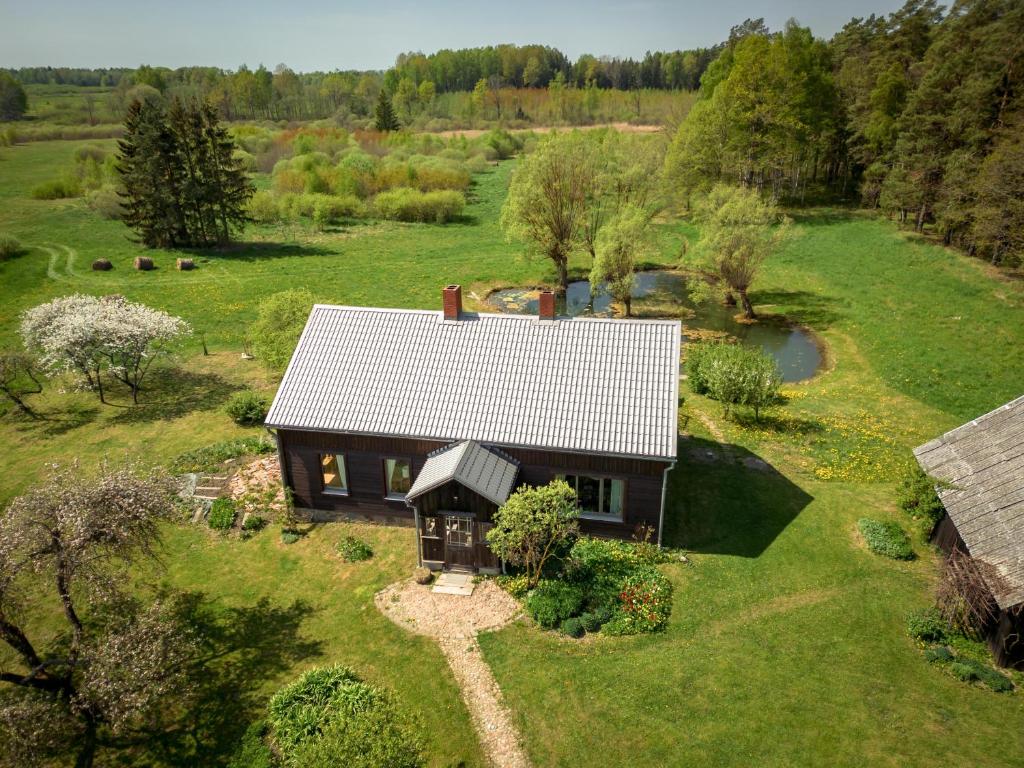
One of the primary draws of countryside living is the symphony of nature that surrounds you. Instead of waking up to the honking of cars, imagine starting your day with the melodious chirping of birds or the rustle of leaves in the wind. The countryside offers a harmonious blend of sights and sounds, from babbling brooks to the gentle sway of trees. Living in sync with nature not only provides a calming backdrop but also offers a refuge from the constant stimuli of city life. It’s a chance to reconnect with the earth and find solace in the simplicity of a sunrise or the stillness of a starlit night.
Amidst the sprawling landscapes, you’ll discover a tapestry of colors that change with the seasons. From the vibrant blooms of spring to the warm hues of autumn, each season paints the countryside with its unique palette. This ever-changing canvas becomes an integral part of your daily life, inviting you to witness the cyclical beauty of nature. Whether it’s the golden fields of summer or the quiet serenity of winter snowfall, the countryside unveils a mesmerizing panorama that evolves throughout the year.
If you want to buy a house in the countryside you can contact one of the top mortgage brokers in Raleigh NC.
Architectural Elegance in Tranquil Settings
While city living often means residing in high-rises and compact apartments, the countryside provides an opportunity for expansive homes set against picturesque backdrops. Architects and homeowners alike can indulge in designing residences that seamlessly integrate with the natural surroundings. Imagine a charming farmhouse with a wraparound porch overlooking rolling hills, or a cottage nestled by a serene lake. The countryside allows for architectural creativity, blending modern comforts with rustic aesthetics.Architects often use 3D scanning architecture to create better designs.
Beyond the allure of standalone homes, rural communities often celebrate a sense of togetherness. Quaint villages boast historic structures that add character to the landscape. From centuries-old churches to charming town squares, the countryside offers a glimpse into the past while fostering a close-knit community spirit. Living in such surroundings not only enhances the aesthetic appeal of your dream home but also provides a connection to the rich history and heritage of the region.
Sustainable Living in Countryside Bliss
The countryside isn’t just a haven for those seeking tranquility; it’s also a hotspot for sustainable living. Away from the urban sprawl, many countryside dwellers embrace a more eco-friendly lifestyle. With vast open spaces, residents often have the luxury of cultivating their own gardens, fostering a culture of self-sufficiency. Fresh, locally sourced produce becomes a way of life, and the reliance on mass-produced goods diminishes, contributing to a smaller ecological footprint.
Renewable energy options also find a natural home in the countryside. Large plots of land allow for the installation of solar panels and wind turbines, harnessing the power of nature to meet energy needs. Water conservation practices are more prevalent, with many rural homes relying on well water and implementing rainwater harvesting systems. Living sustainably in the countryside isn’t just a choice; it’s a holistic lifestyle that harmonizes with the environment.
If you have problems with pests in your countryside home be sure to contact a pest control in Reno NV.
Escape to Serenity: Countryside Real Estate Trends
In recent times, the allure of countryside living has led to a surge in real estate interest. Homebuyers are increasingly drawn to the prospect of spacious homes surrounded by nature, trading the frenetic pace of city life for the tranquility of the countryside. This shift has sparked a rise in innovative real estate projects that aim to provide modern amenities without compromising the natural charm of rural landscapes.
If you are building a house in the countryside be sure to do deck building consultation in Potomac MD.
Countryside properties, once considered remote, are now being seen as luxurious escapes. Developers are incorporating sustainable design principles into new projects, ensuring that these homes offer both comfort and environmental consciousness. From eco-friendly materials to energy-efficient infrastructure, the real estate market is witnessing a paradigm shift towards creating dream homes that coexist harmoniously with nature. If you are looking for your new home online, be sure to find a website that uses the best web hosting.
Embracing Technological Harmony in Rural Living
While the countryside is often associated with a more traditional way of life, the modern era has seen a fascinating intersection between technology and rural living. Far from being isolated, many countryside communities are embracing smart technologies to enhance the quality of life. Imagine a home where smart sensors optimize energy consumption or a farm where drones aid in precision agriculture. The countryside is evolving, integrating the best of technology to create a harmonious balance between the serenity of nature and the efficiency of modern innovations.
Innovative solutions extend beyond individual homes. Rural areas are becoming testing grounds for sustainable technologies, with communities implementing smart grids that efficiently distribute energy. High-speed internet connectivity, once a luxury reserved for urban centers, is now reaching even the most remote countryside locations. This technological infusion not only facilitates remote work but also fosters a sense of connectivity among rural residents, breaking down geographical barriers and creating a global village within the tranquil landscapes.
If you want to sell your business and buy a cottage in the mountains so you can rent it be sure to contact M&A advisory firms.
Artistic Expression in Countryside Living
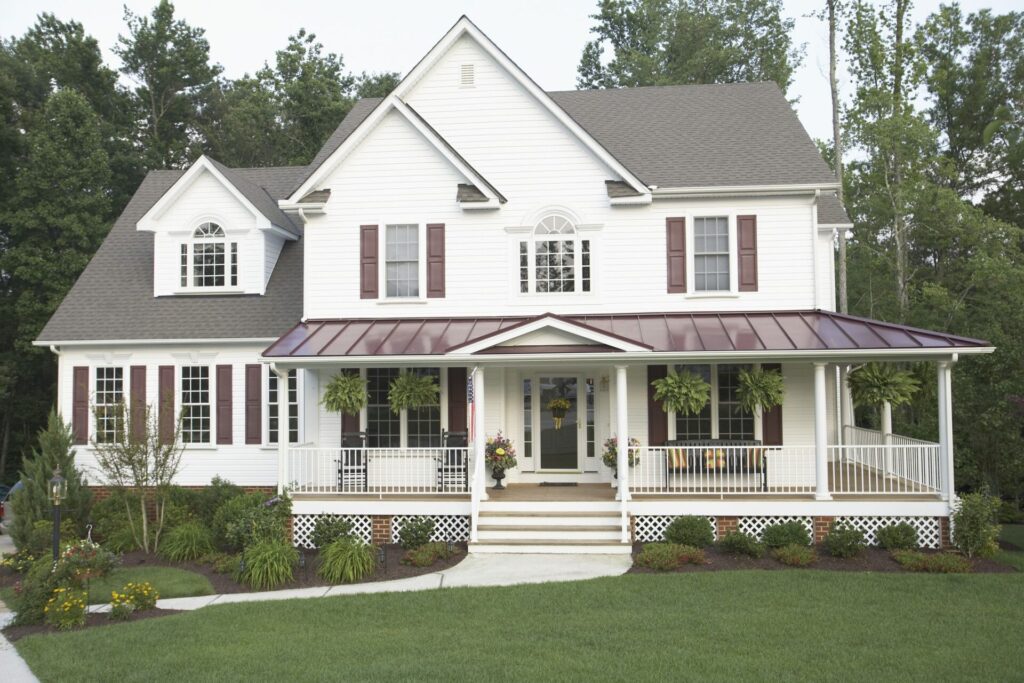
The countryside has long been a muse for artists seeking inspiration from nature’s beauty. However, in today’s context, it’s not just about capturing the scenery on canvas; it’s about infusing art into the very fabric of rural living. Imagine strolling through a countryside village adorned with murals and sculptures, turning every street into an open-air gallery. Many rural areas are embracing public art projects, not only to enhance aesthetics but also to celebrate local culture and creativity.
Artistic expression extends to the design of homes themselves. From custom-made stained glass windows to handcrafted furniture, the countryside offers a canvas for homeowners to become artists in their own right. Local artisans often find a haven in rural communities, contributing to the uniqueness of each home. The result is not just a residence but a living masterpiece that tells a story of both nature and human creativity. If you want more privacy in your big countryside house you can buy solar screens in Colorado Springs for your windows.
Wellness Retreats: The Countryside as a Healing Haven
Beyond the architectural and technological aspects, the countryside is increasingly being recognized as a wellness destination. Nature has an inherent ability to heal, and rural living provides an immersive experience that goes beyond the physical structure of a home. Picture a retreat where the air is crisp, and the only sounds are those of rustling leaves and chirping birds. Wellness resorts nestled in the countryside offer an escape from the stresses of urban life, providing holistic experiences that rejuvenate both the body and mind. Welness resorts need to have proper HVAC systems and if the problem occurs it is recommended to contact a company that provides HVAC repair in Charlotte NC.
Countryside wellness retreats often incorporate natural elements into their design, with open-air yoga pavilions, meditation gardens, and spa facilities that utilize locally sourced ingredients. The tranquility of the surroundings becomes an integral part of the wellness journey, allowing visitors to disconnect from the chaos of daily life and reconnect with themselves. Whether it’s therapeutic hikes through scenic trails or mindfulness sessions amidst wildflower fields, the countryside becomes a therapeutic landscape for holistic well-being.
Educational Hubs in Nature’s Classroom
As rural areas embrace the potential of modern living, educational institutions are also finding their place in the countryside. Imagine a school surrounded by acres of greenery, where students learn not only from textbooks but also from the natural world around them. Educational hubs in the countryside are becoming pioneers in experiential learning, utilizing the vast outdoor spaces as extensions of the classroom.
These rural schools focus not only on academic excellence but also on instilling a deep appreciation for nature and sustainability. Students engage in hands-on activities such as organic farming, wildlife observation, and environmental conservation projects. The countryside becomes a living laboratory, fostering a connection between young minds and the ecosystems that sustain life. The result is a generation that not only excels academically but also possesses a profound understanding of their role in preserving the planet.
Culinary Delights: Farm-to-Table Experiences
One of the most delightful aspects of countryside living is the culinary journey it offers. Beyond the standard fare of city restaurants, rural areas provide a unique farm-to-table experience. Imagine savoring a meal where the ingredients are harvested just steps away from the kitchen. Many countryside homes boast expansive gardens where residents cultivate a variety of fruits, vegetables, and herbs, creating a direct link between the land and the dining table.
In addition to personal gardens, the countryside is often dotted with farmers’ markets and local producers offering fresh, organic produce. Residents and visitors alike can indulge in the rich flavors of artisanal cheeses, homemade jams, and locally sourced meats. The culinary scene becomes a celebration of regional diversity, with each countryside area contributing its distinct flavors to the gastronomic tapestry. Living in the countryside isn’t just about a peaceful home; it’s about embracing a lifestyle where every meal is a celebration of the land’s abundance.
Just as the tranquility of countryside living is built on the harmony of nature and design, the success of a brand or dream home rests on the thoughtful fusion of visuals and messaging crafted by a logo design company.
Adventure Awaits: Outdoor Activities in Rural Paradises
For those seeking an active lifestyle, the countryside is a vast playground of outdoor adventures. Beyond the confines of city gyms, imagine having endless trails for hiking, biking, or horseback riding right at your doorstep. The countryside offers a plethora of recreational activities, from fishing in pristine lakes to exploring hidden caves in the hills. Nature becomes the ultimate adventure, and every day presents an opportunity to discover something new.
Rural areas often host community events centered around outdoor activities, fostering a sense of camaraderie among residents. Whether it’s an annual countryside marathon, a biking festival, or a community camping trip, the countryside provides the perfect backdrop for communal bonding through shared adventures. Living in such an environment not only promotes physical well-being but also encourages a spirit of exploration and discovery.
Preserving Biodiversity: Countryside as a Conservation Sanctuary
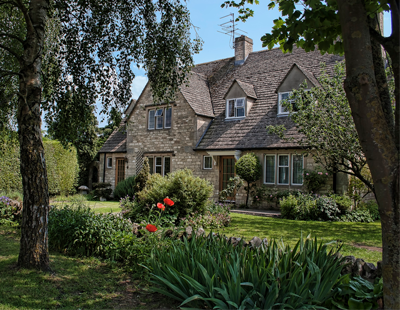
As urbanization continues to encroach upon natural habitats, the countryside plays a vital role in preserving biodiversity. Many rural areas serve as sanctuaries for diverse flora and fauna, providing a haven for endangered species. Conservation efforts in the countryside extend beyond protected areas, with residents actively participating in initiatives to safeguard the local ecosystems.
Imagine waking up to the sight of colorful butterflies dancing in your garden or the distant call of a rare bird perched on a nearby tree. Countryside living becomes a symbiotic relationship between humans and nature, where residents actively contribute to the preservation of the delicate balance that sustains life. It’s not just a home; it’s a commitment to being stewards of the land, ensuring that future generations can continue to revel in the richness of biodiversity.The best school magician in Los Angeles remarks that he loves visiting Belgium countryside cottages at least once a year.
The Future of Countryside Living: A Harmonious Coexistence
As we peer into the future, the countryside emerges as a dynamic space that seamlessly blends tradition with innovation. It’s not just a retreat from city life; it’s a canvas for a multifaceted lifestyle that encompasses technological advancements, artistic expression, wellness pursuits, education, culinary delights, outdoor adventures, and conservation efforts. The countryside becomes a microcosm of sustainable and harmonious living, proving that the dream home extends far beyond the confines of city lights.
In this evolving narrative, individuals aren’t just residents; they are active participants in shaping the destiny of their rural havens. The countryside is no longer a refuge solely for those seeking solitude; it’s a vibrant community where diverse aspirations find common ground. It’s a testament to the resilience of nature and the human spirit, coexisting in a symphony that harmonizes the simplicity of the past with the possibilities of the future.
